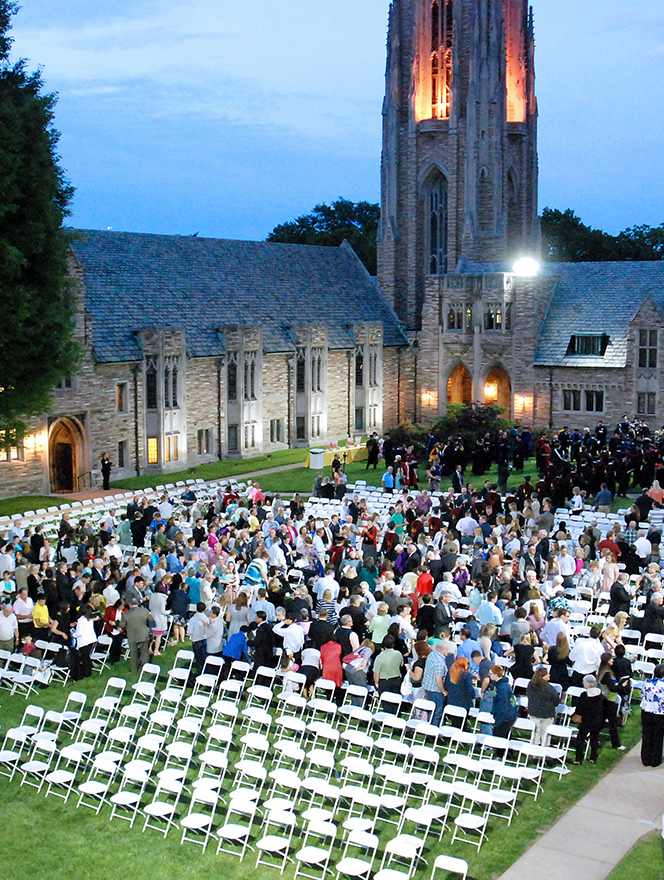

Campus
Concordia Seminary, St. Louis sits on a 72-acre beautifully landscaped campus on the outskirts of St. Louis in Clayton, Mo., where the Seminary has been located since 1926. Visitors are encouraged to take a stroll through the campus where they will note the Seminary’s Collegiate Gothic architecture, wooded and landscaped grounds, and many landmarks.
Main Quadrangle
Centrally located in the middle of the Seminary’s campus is the Main Quadrangle, which is bordered on all four sides by original Collegiate Gothic buildings that were part of the campus completed in 1926. At the time of the dedication, the Seminary was the largest Protestant seminary in the United States.
Today, the quad is most famously known for hosting Commencement exercises each spring.
The quad — which features a large grassy area, crisscrossed by sidewalks — is surrounded by Schaller Hall, Guenther Hall, Stoeckhardt Hall and Pritzlaff Hall. Notable offices housed in those buildings include the Presidents Room in Pritzlaff Hall, which served as the reading room for the original library and displays the portraits of the Seminary’s past presidents, the Ministerial Formation offices in Pritzlaff Hall, and the Admissions and Financial Aid offices in Stoeckhardt Hall.
There are three dormitory halls — Graebner (also known as I Dorm), Craemer (residence hall lounges) and Brauer (also known as G Dorm), which are currently not occupied.

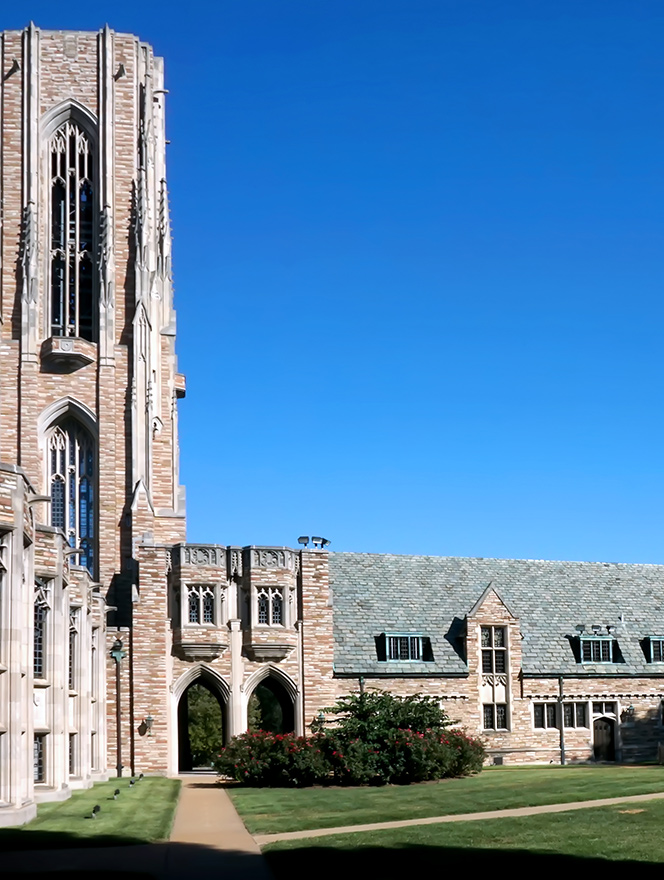
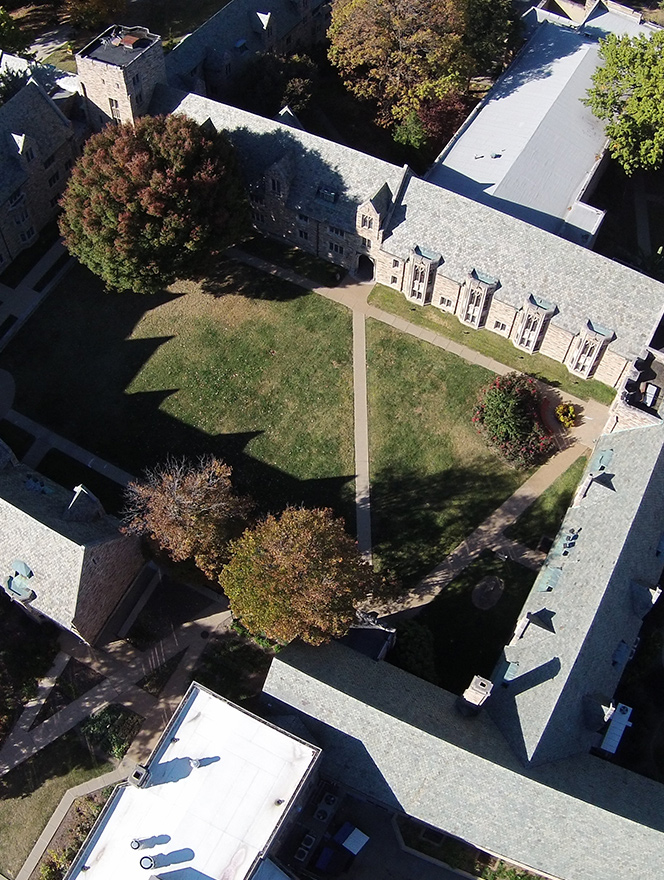
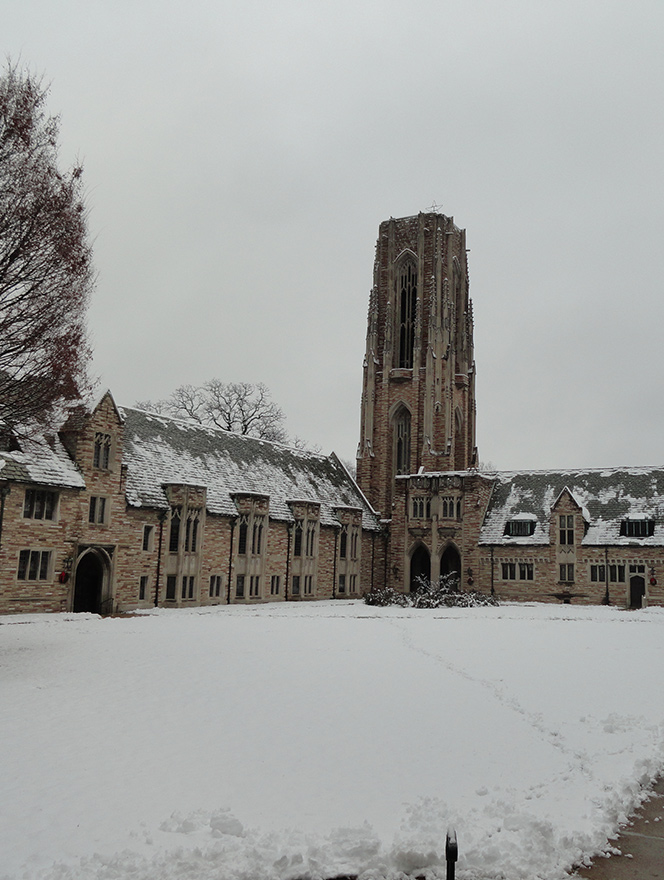
Luther Tower
Likely the most iconic symbol on campus, Luther Tower, designed by Charles Klauder, rises above the campus, with the base located on the east side of the Main Quadrangle.
It stands 156 feet tall. Although it was included in the original 1922 plans for the Seminary campus, Luther Tower was not completed for 44 years, when funding was secured. The base of the tower was built in the 1920s, up to the level of the balcony above Walther Archway. The tower was completed in 1966. Inside the base of the tower is the Chapel of the Holy Apostles, which is typically used for private meditation, devotions, small group devotions and prayer office services.
Atop Luther Tower is a 49-bell carillon, which chimes before chapel services and on special occasions.
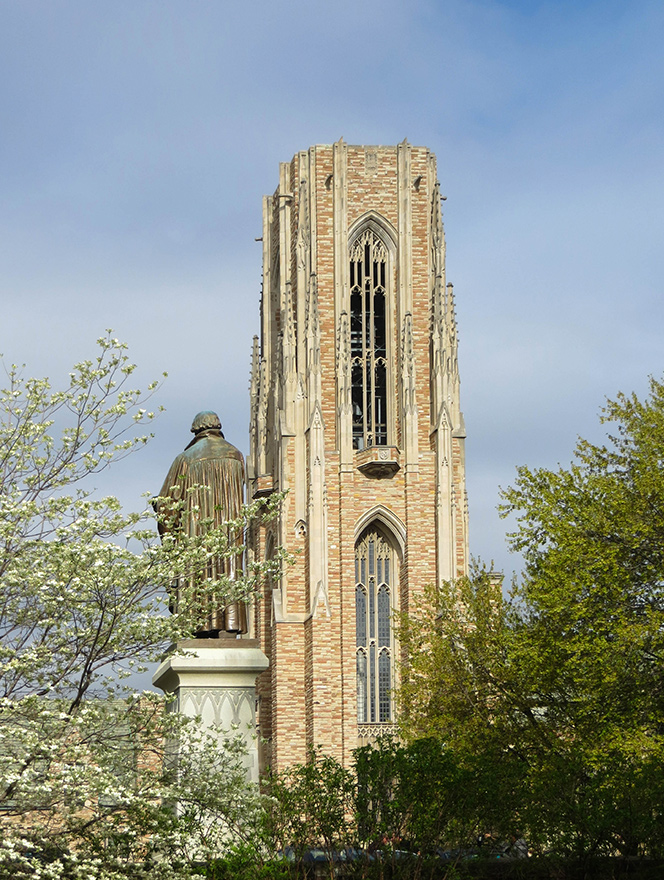
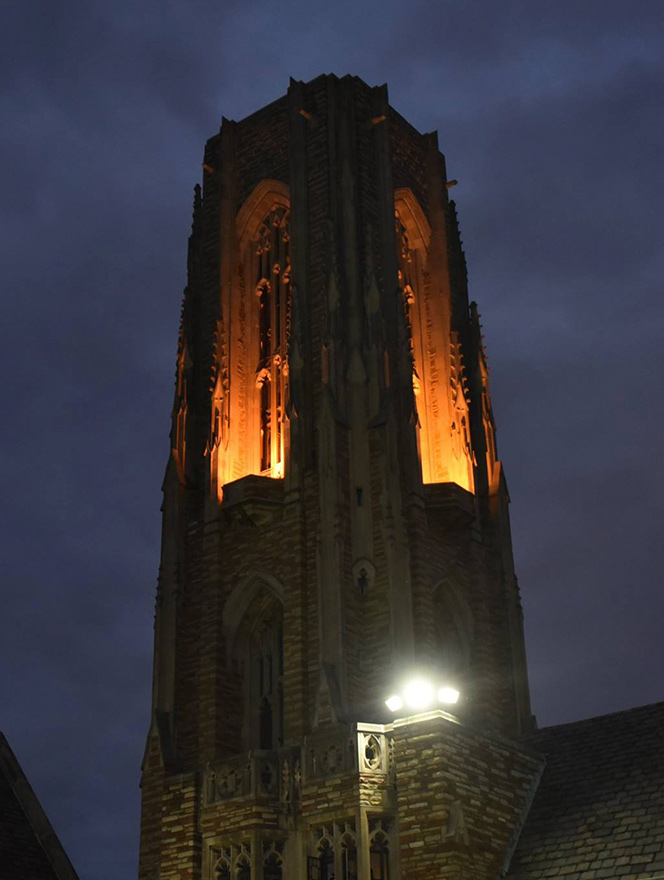
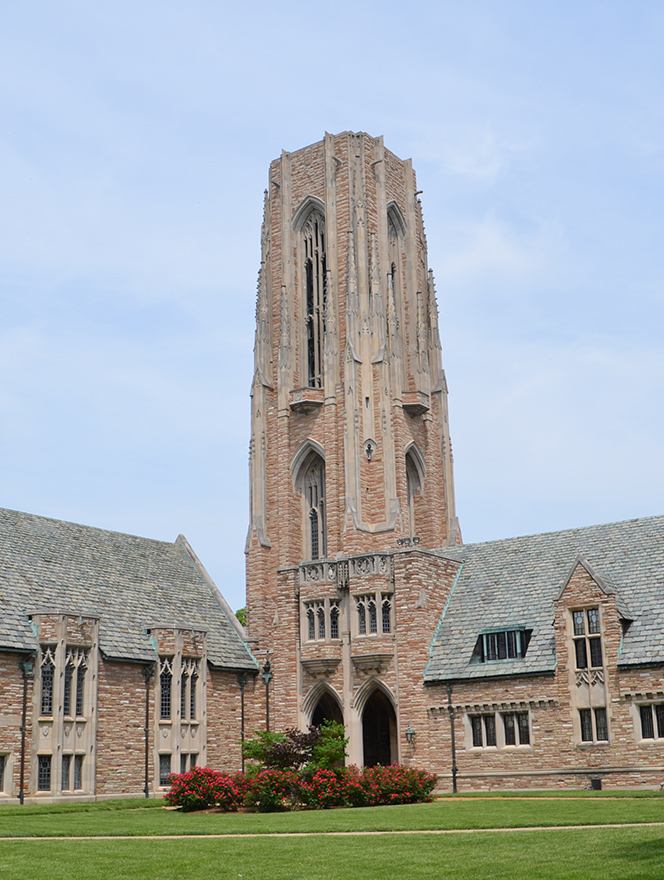
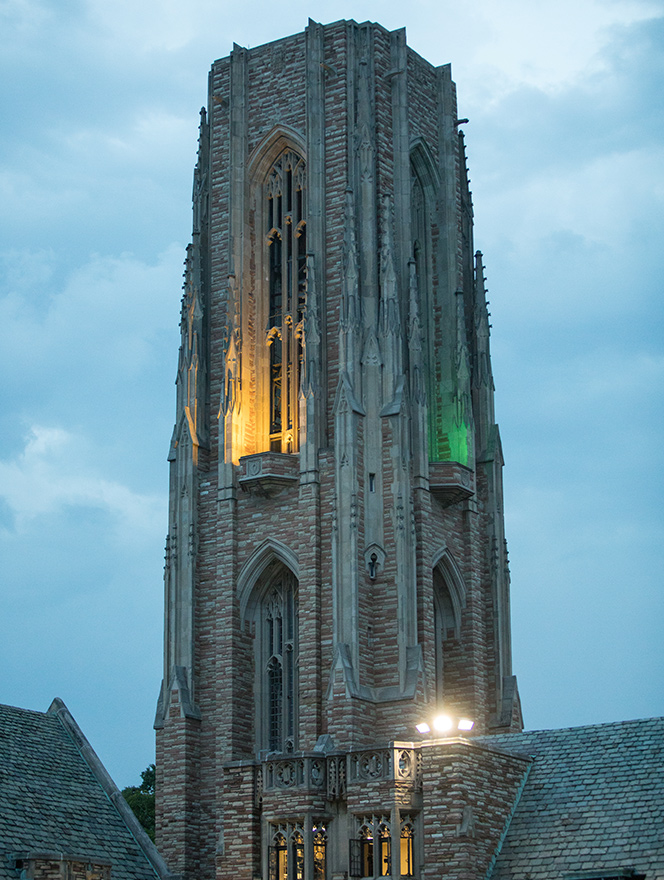
Carillon
At the top of Luther Tower is the 49-bell carillon, which was dedicated in 1970 as a memorial to all pastors who have served The Lutheran Church—Missouri Synod.
The carillon is one of 170 carillons in North America.
It was cast in 1969-70 at the van Bergen foundries in Holland and South Carolina. The largest bell weighs 2 1/2 tons and the lightest is 17 pounds.
The inaugural recital was played in the spring of 1971 by Raymond Keldermans, city park district carillonneur of Springfield, Ill. Today carillon concerts are offered each summer in June for both the Seminary campus and the surrounding community.
The carillon chimes Monday through Friday on campus as a call to chapel, and also on special occasions such as Call Day and Commencement.
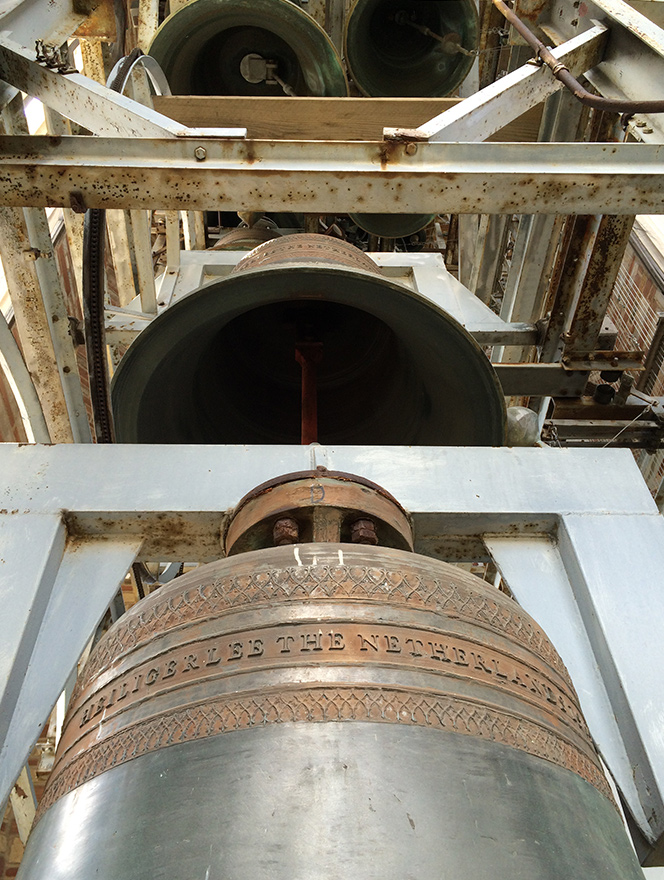
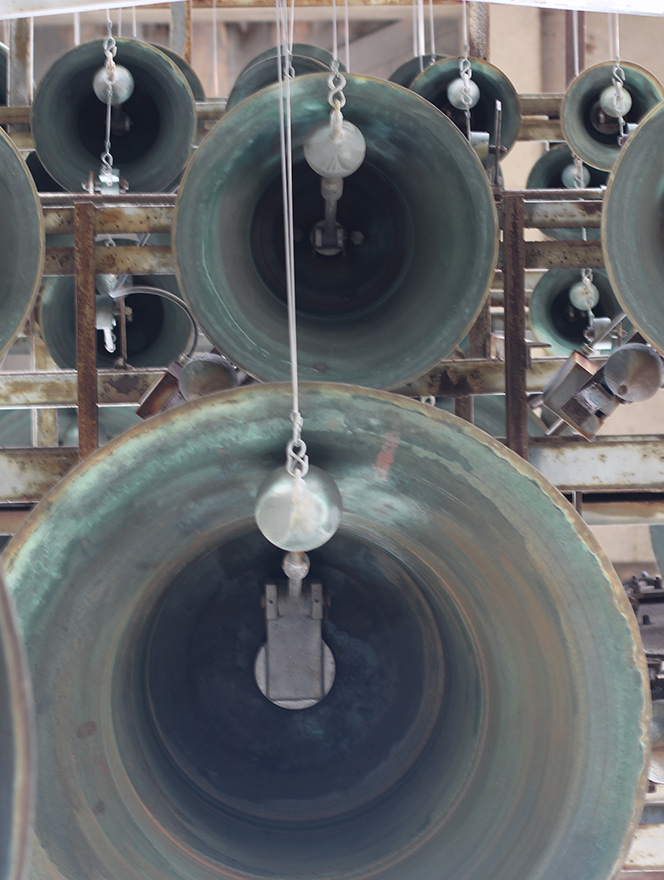
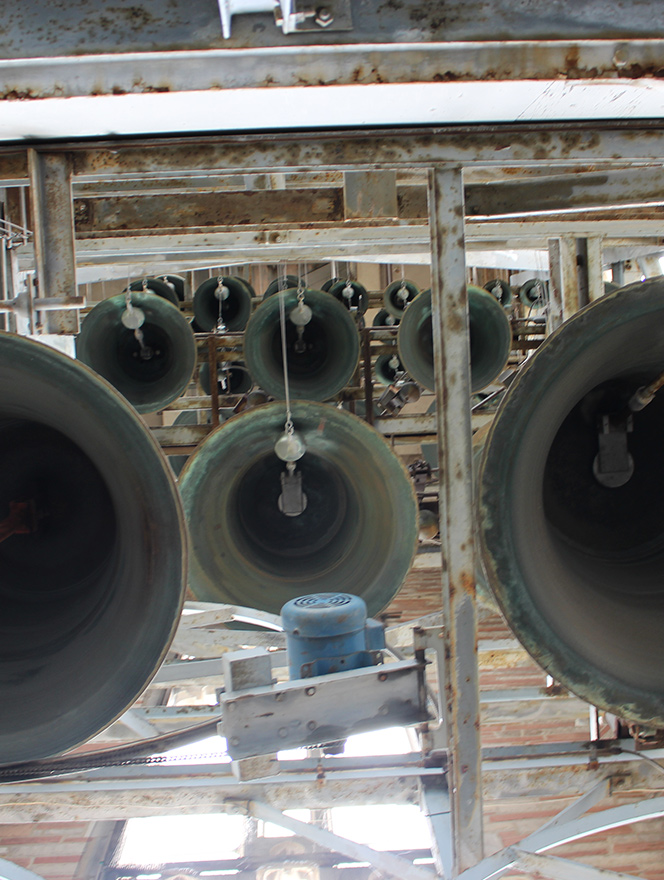
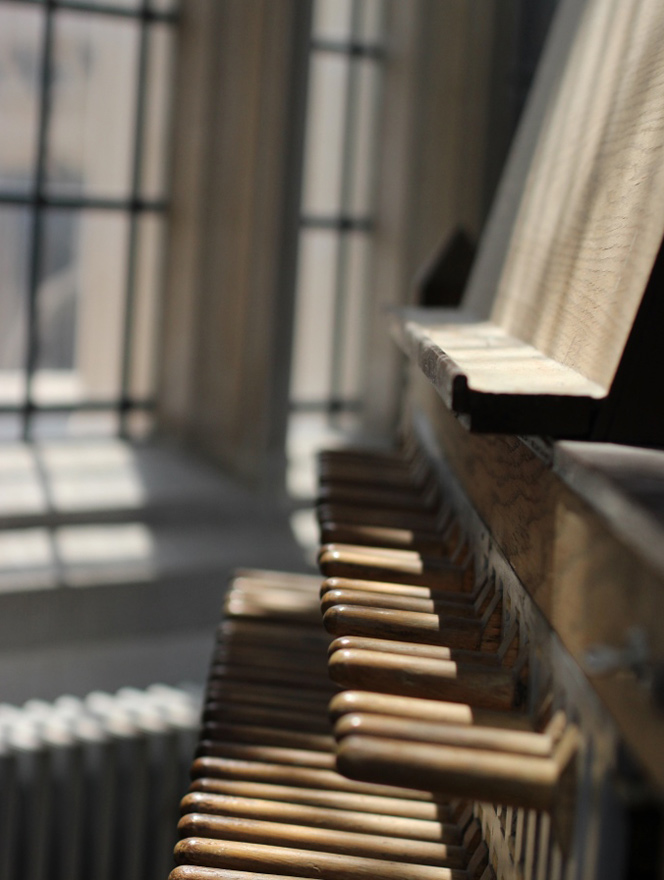
Luther Statue
On the east side of campus stands a statue of Martin Luther, across from Luther Tower and the Walther Archway.
The statue is a replica of the original Luther statue in Worms, Germany, where Luther made his famous “Here I Stand” speech. The statue was originally dedicated at the Seminary’s former location on Jefferson Avenue in 1903. It was moved to the current campus in 1926. The bronze statue is more than 9 feet tall and the granite base is more than 12 feet tall.
The statue depicts Luther holding the Bible, which he translated into German from the original languages. His right hand rests upon the Bible to signify that all of his teachings are based on Scripture alone. The statue shows a mature Luther whose hairstyle and robes are those of an academic, not a monk.
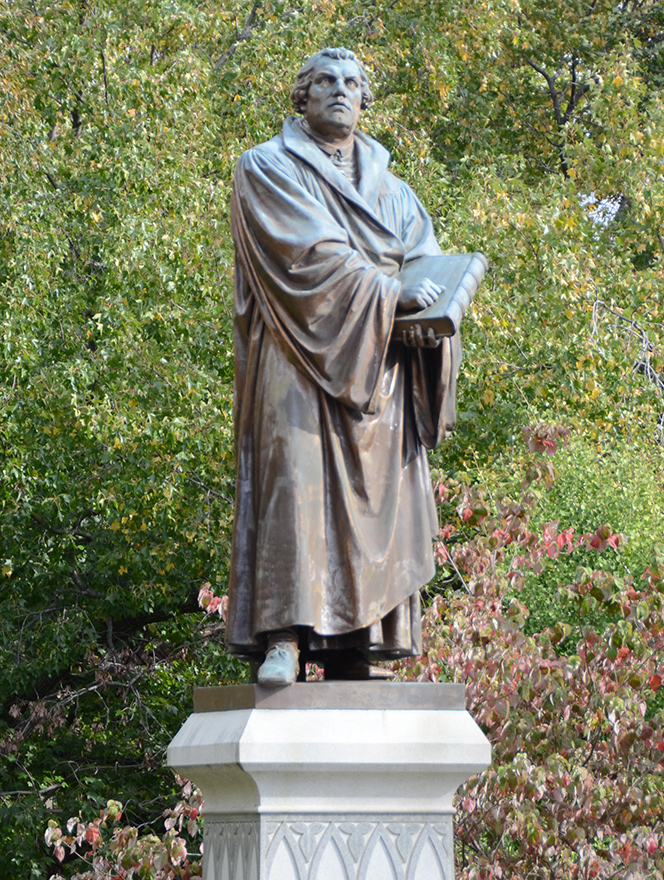
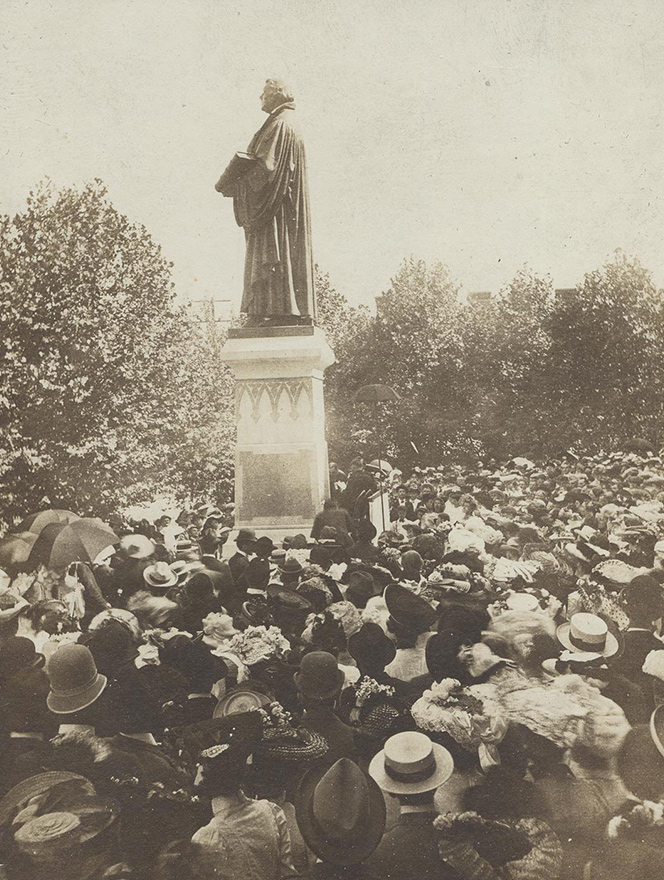
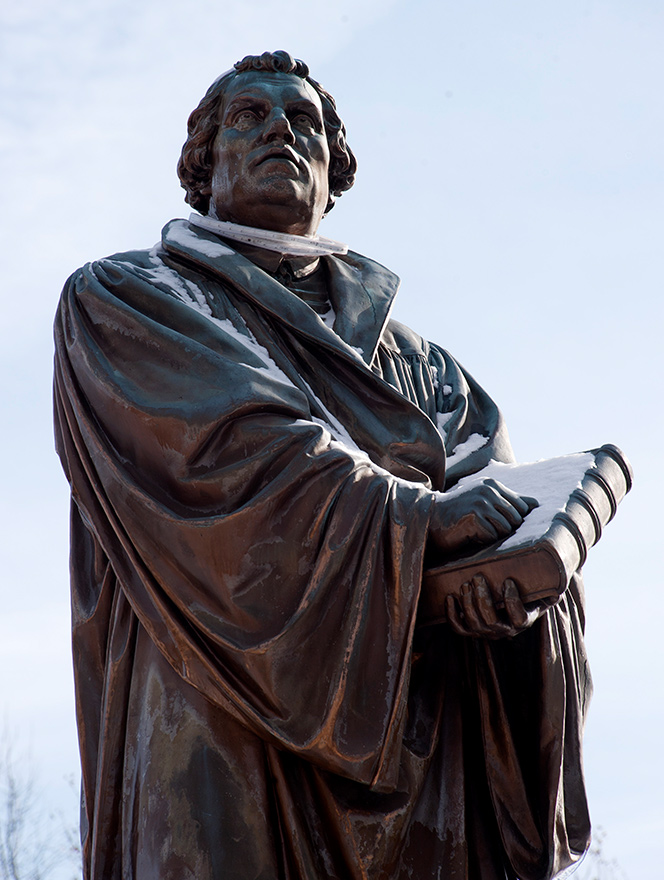
The Chapel of St. Timothy and St. Titus
The Chapel of St. Timothy and St. Titus is the first freestanding worship facility since Concordia Seminary moved to its current location in Clayton, Mo., in 1926. Since its dedication on Nov. 15, 1992, the chapel has served as the site of thousands of daily services and numerous special services.
The chapel was designed to match the architectural style of the original Seminary buildings, with both the dormers and the stonework. The decision was made to locate it in the heart of the campus to reflect the Seminary community’s emphasis on worship as the central activity to its life and being.
The campus community gathers daily for chapel at 9:35 a.m. for prayer, preaching and music. Holy Communion is observed every Wednesday.
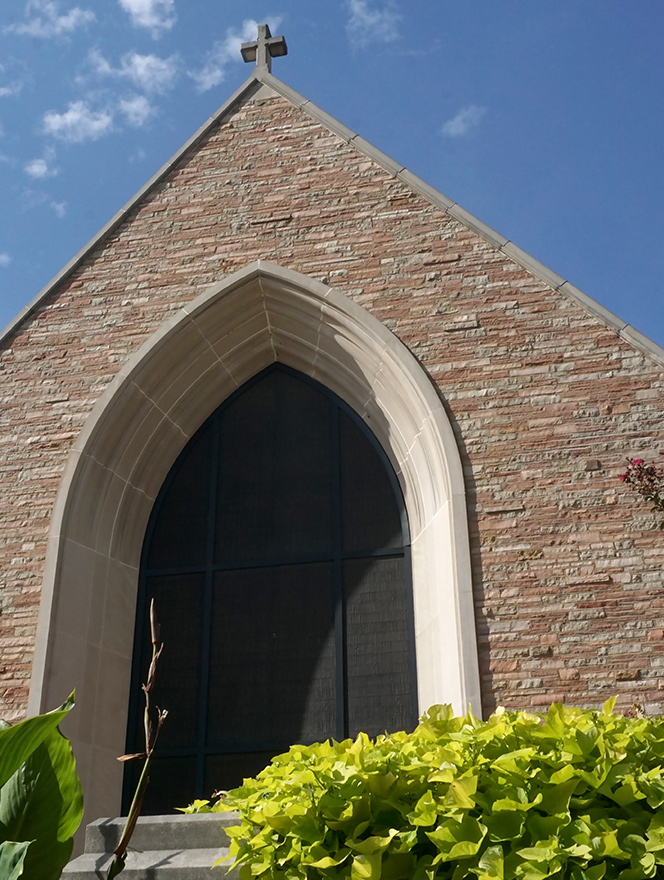
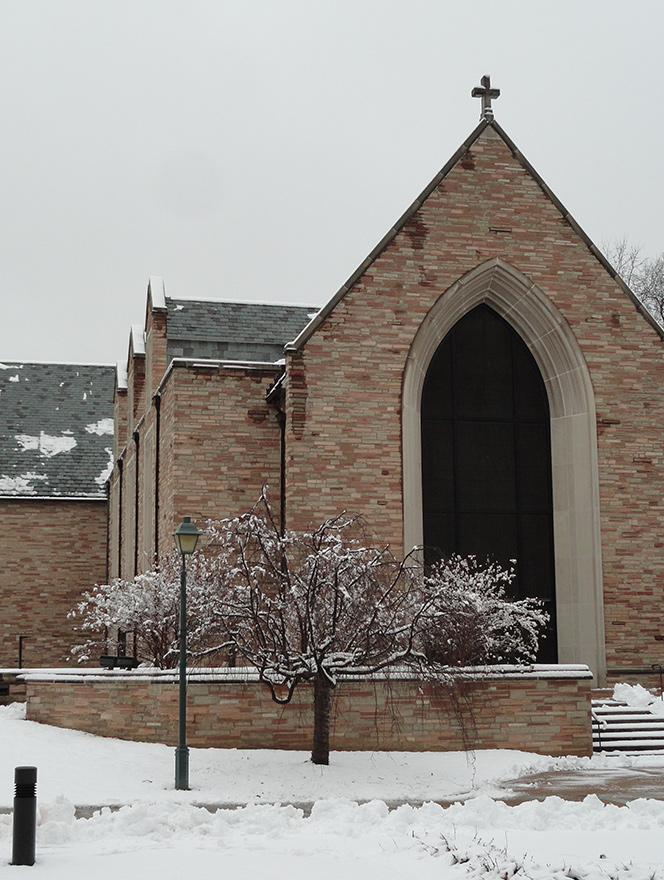
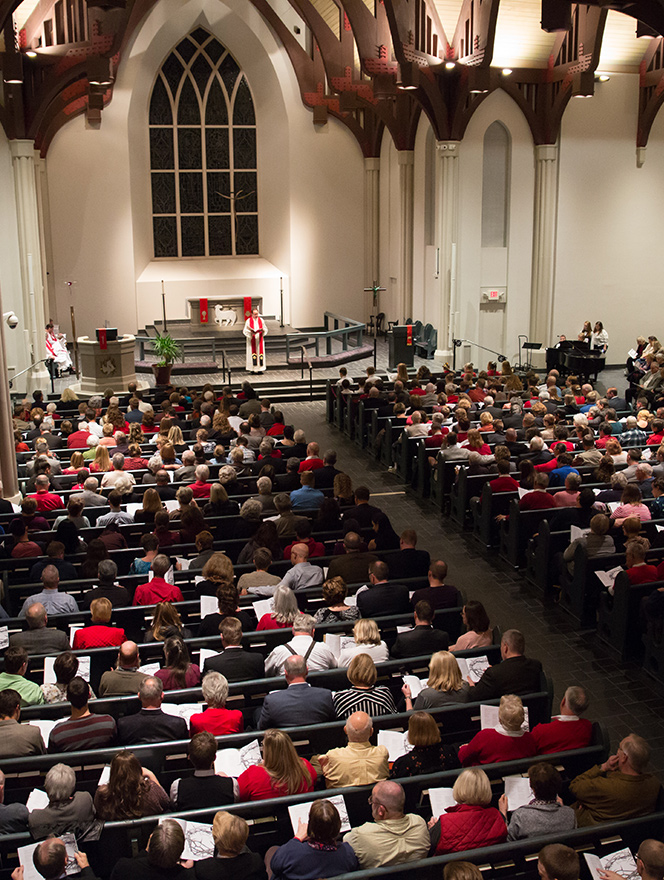
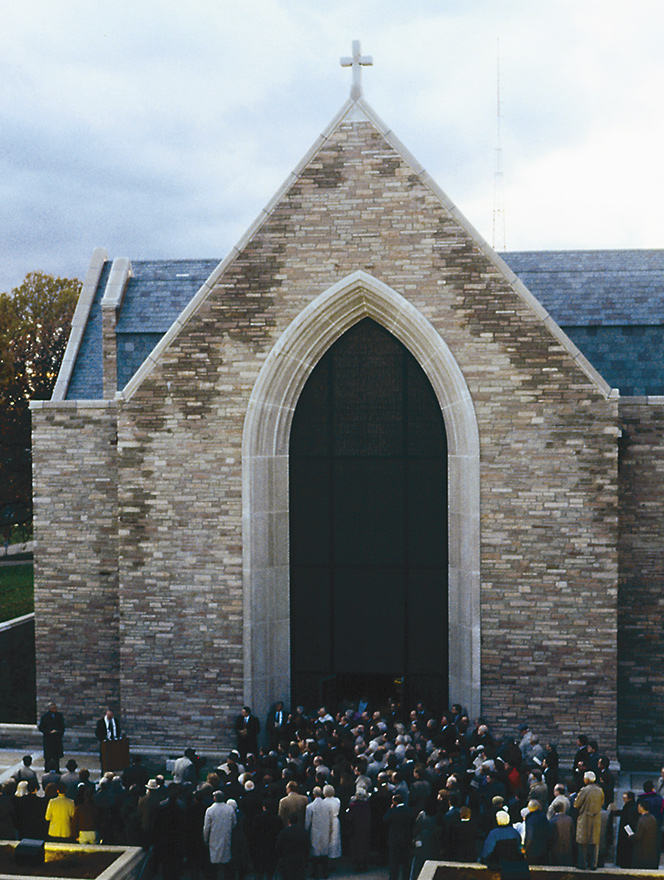
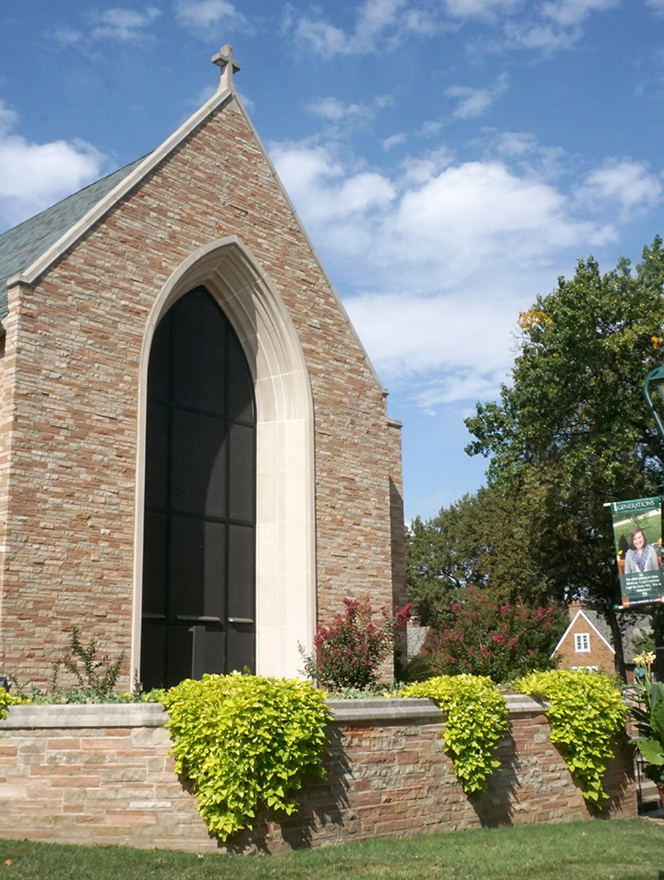
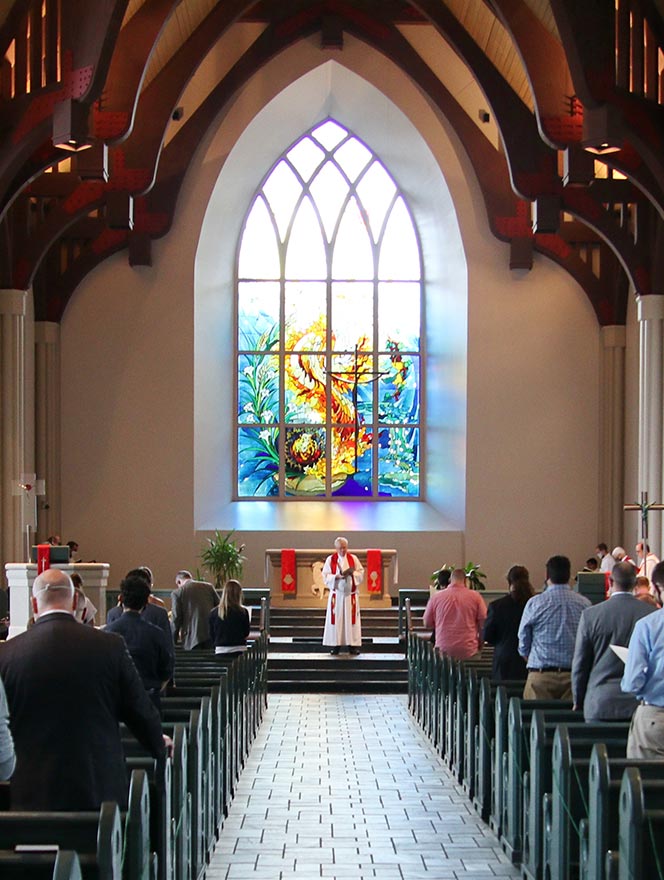

President’s Plaza
Near the Walther Archway is the bell from the Seminary’s former Jefferson Avenue campus in St. Louis, where it was used from 1883 to 1926. The bell is mounted on a solid slab of Indiana bluff limestone.
For a number of years, the bell was mounted in a wooden tower located where the Chapel of St. Timothy and St. Titus now stands. Concordia Historical Institute acquired the bell and generously returned it to be displayed on campus.
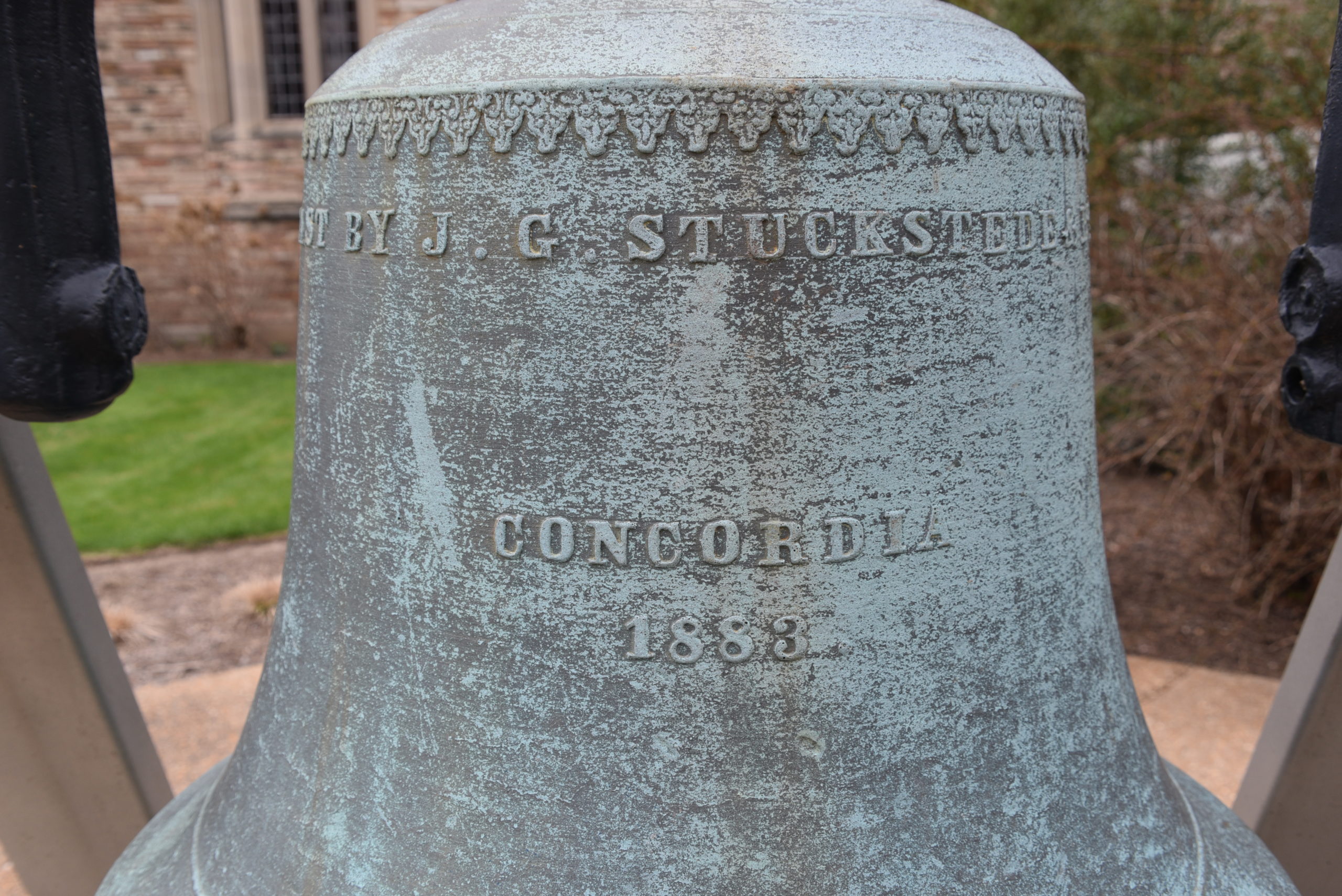
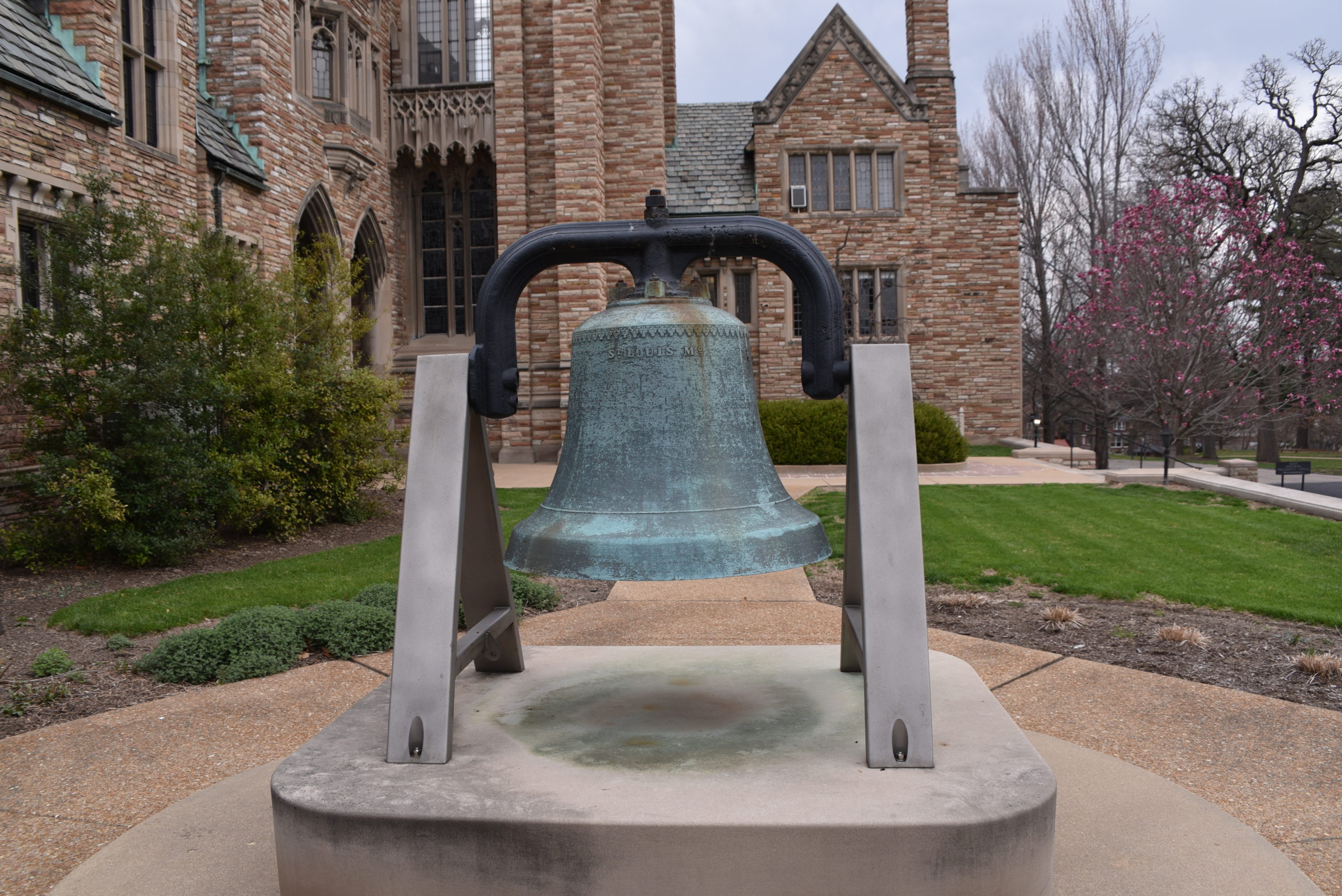
Log Cabin
On the east side of the library sits a replica of the original Concordia Seminary — a log cabin.
The original school, known as the “Log Cabin College,” was built in 1839 in Perry County, Mo., by German-Saxon immigrants. Upon arriving, the settlers immediately built a school to provide Christian education for their children.
The school was housed in a one-room log cabin and served as an elementary and preparatory school. The opening enrollment consisted of four girls and seven boys ranging in age from 5 to 15. The school later became the first college and seminary of The Lutheran—Church Missouri Synod.
The original 20-by-17-foot log cabin school, which is listed on the National Register of Historic Places, was moved to its present location in central Altenburg, Mo., in 1912.
The cabin on campus was built and dedicated in 1938, and was used in the film, “Call of the Cross,” which was made in 1939 to commemorate the 100th anniversary of the Saxon immigration to the United States.
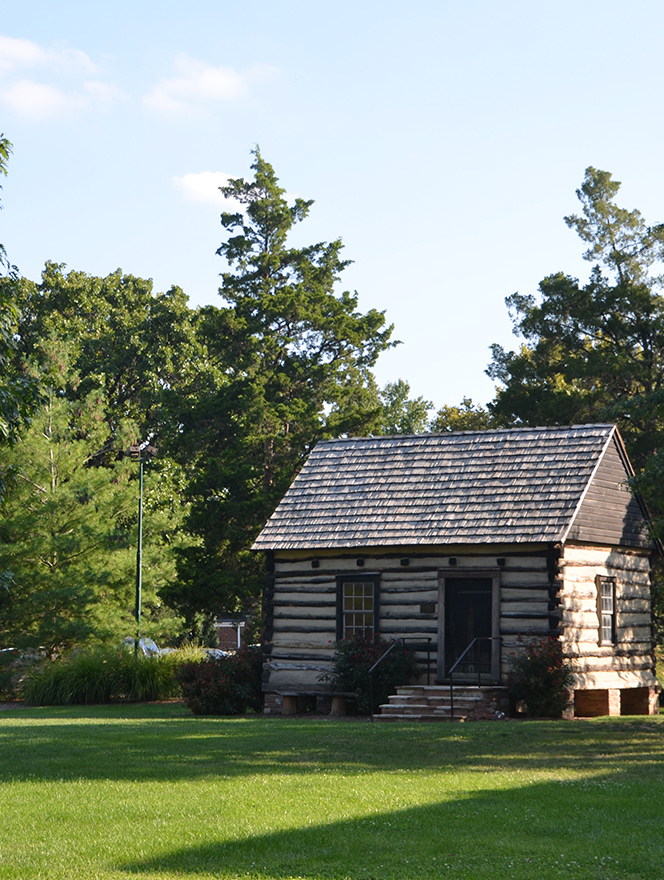
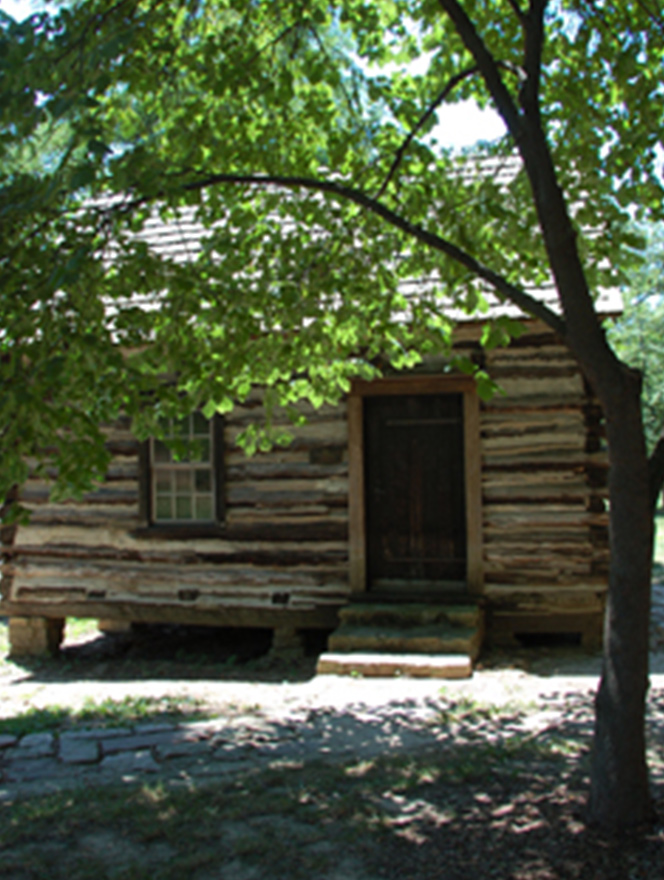
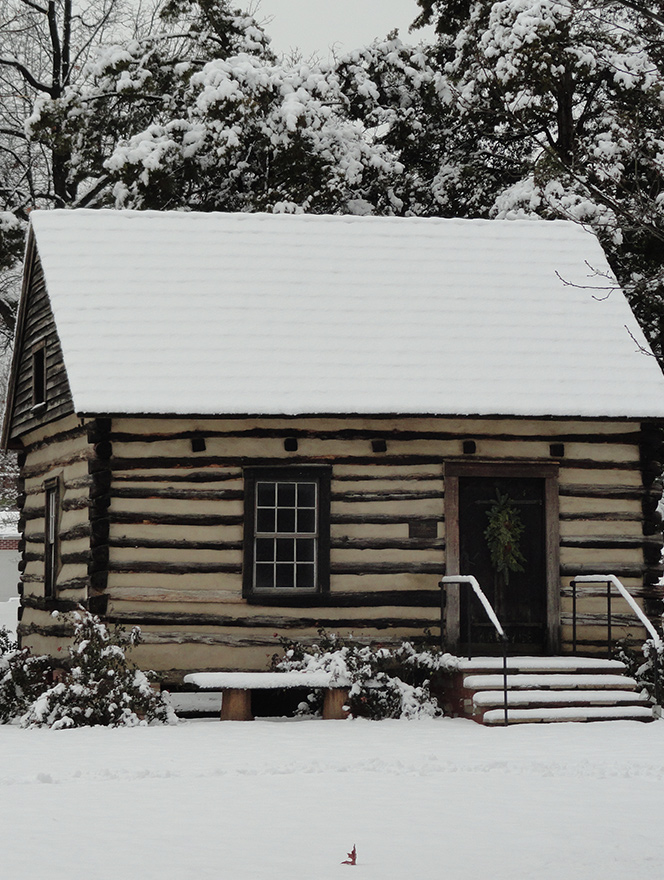
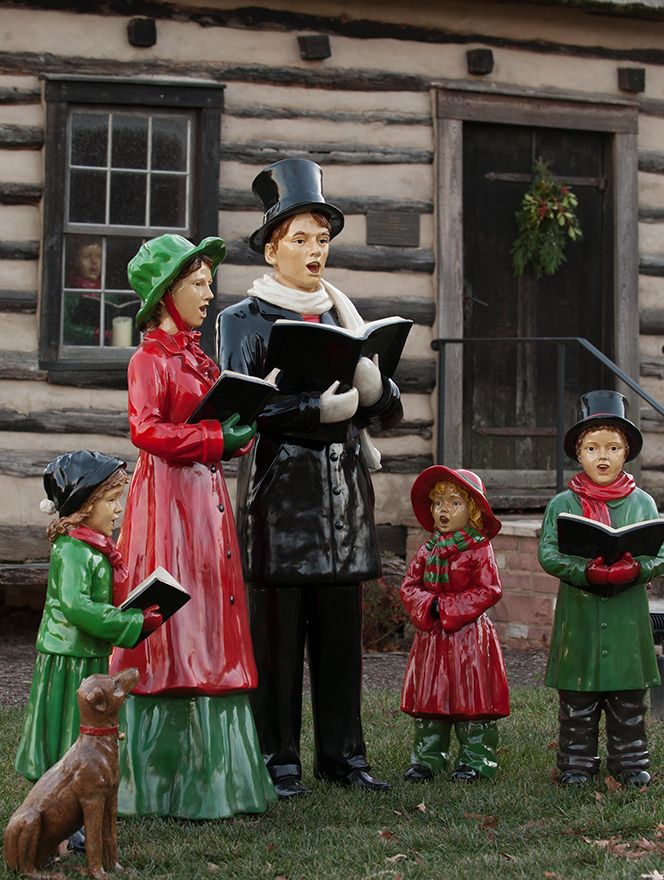
Library
The Kristine Kay Hasse Memorial Library contains more than 270,000 volumes, and is the second largest Lutheran library in North America.
The library houses more than 6,000 items in the rare book collection, including one of the largest collections of Lutheran Reformation reference materials. These include works that date to Luther’s time. The collection features other items of historical significance including Johann Sebastian Bach’s personal Bible.
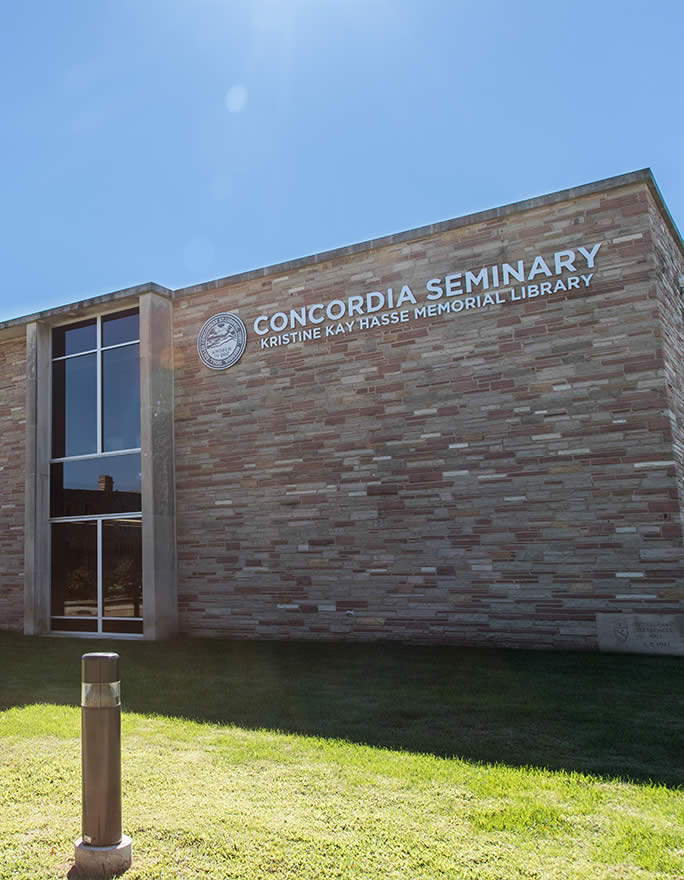
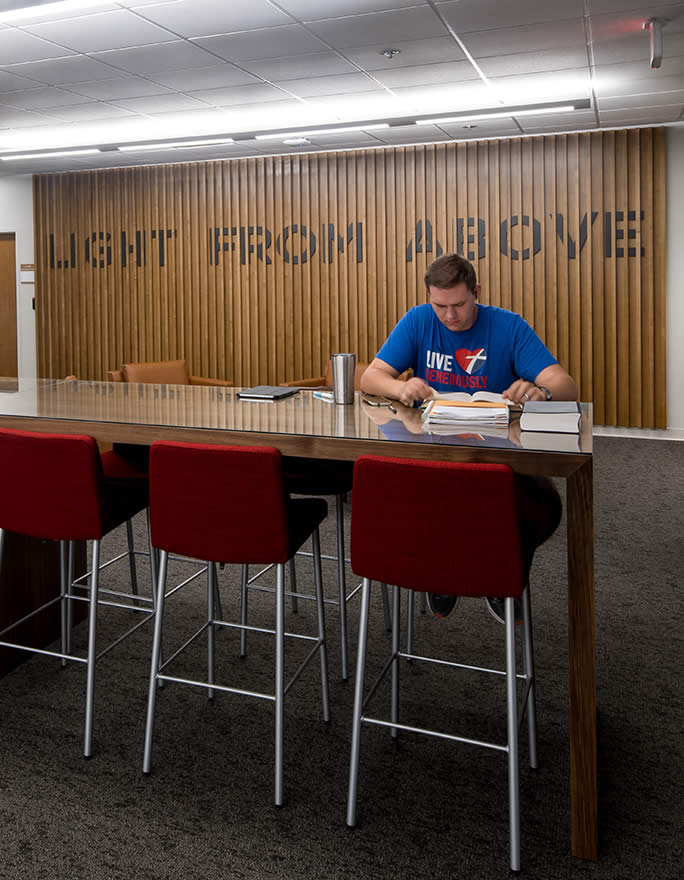
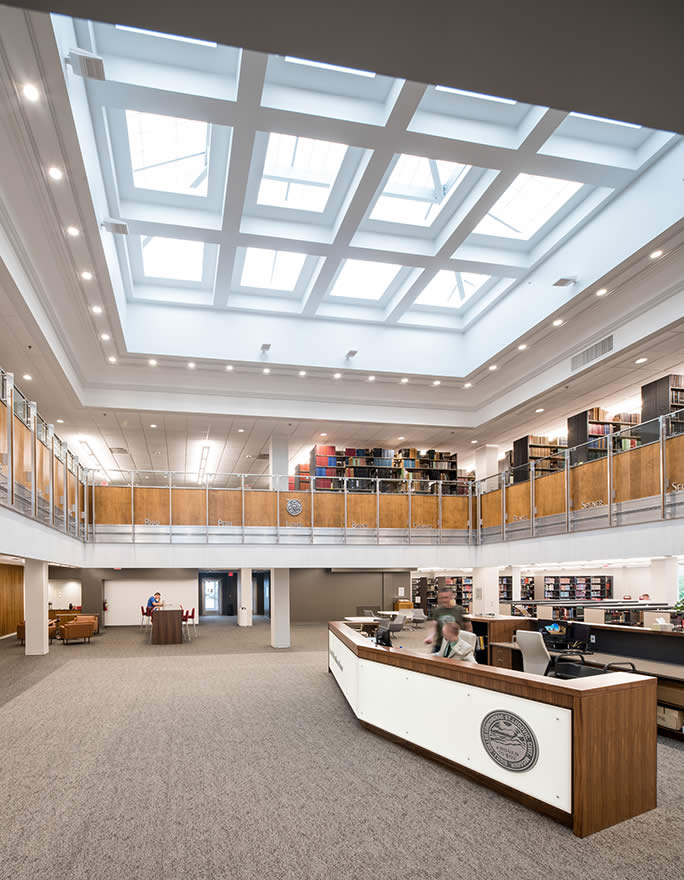
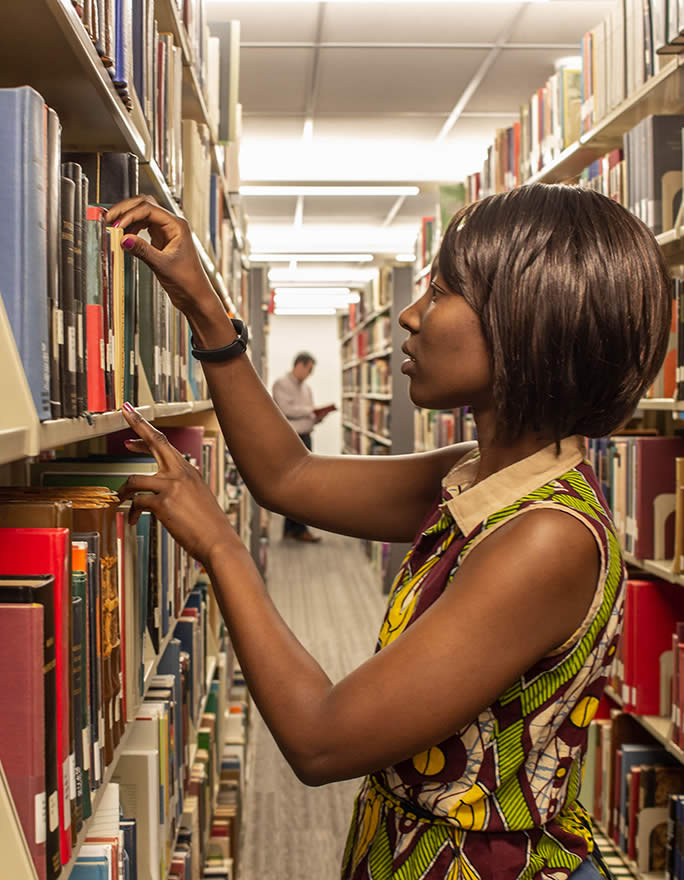
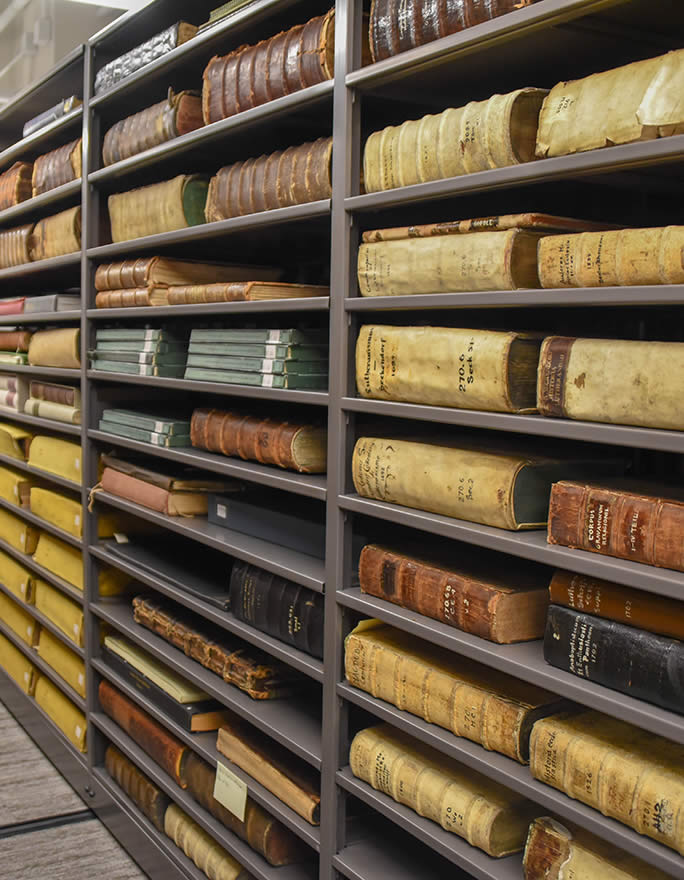
Building Namesakes
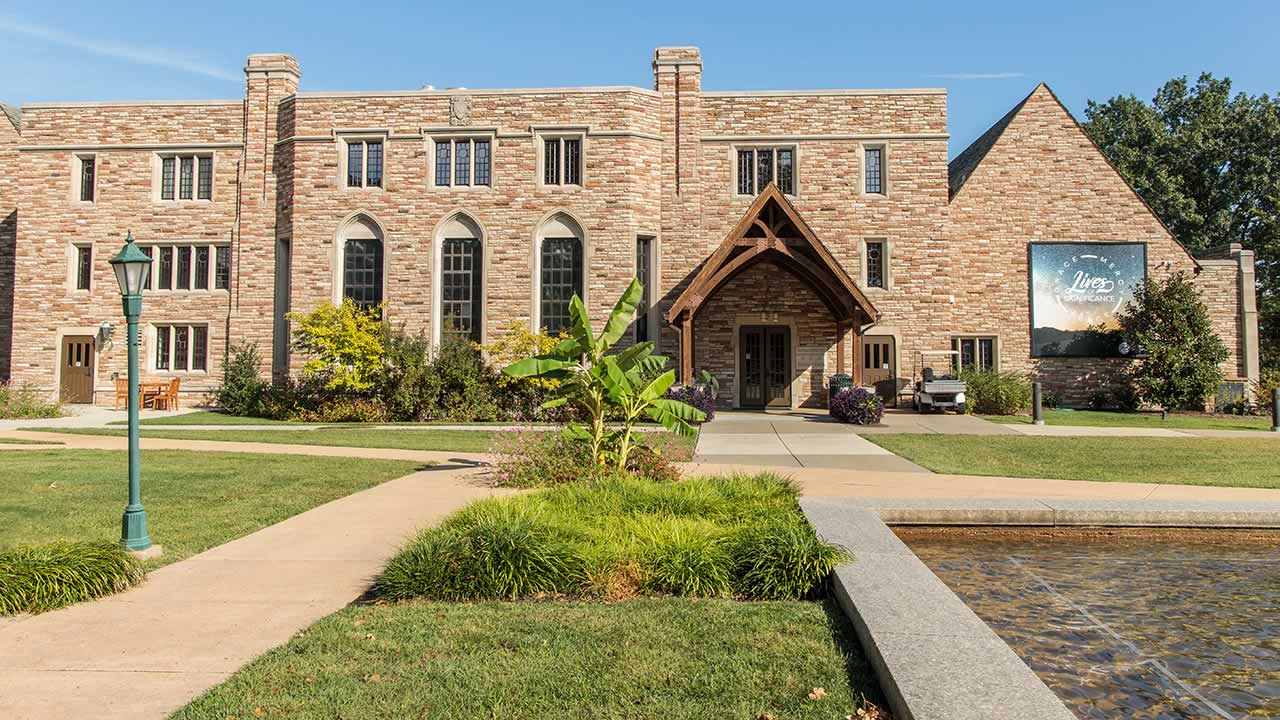
Johann Hinrich Benidt Seminary Center
Charles (Chuck) E. Benidt grew up as the oldest of six children near Milwaukee, Wis. In 2003, he established the Charles E. Benidt Foundation, which provides funds to charitable organizations that espouse his Christian values. A few years later, a challenge grant from the Benidt Foundation led to a major renovation of the Seminary dining hall complex. Chuck chose to become a Concordia Seminary supporter after recalling fond stories from his confirmation pastor, Rev. George Beiderwieden Sr., who graduated from the Seminary in 1910. After the renovation, the complex, which includes Wartburg and Koburg halls, was renamed in honor of Chuck’s grandfather, Johann Hinrich Benidt. Though Chuck died in 2006, he continues to touch lives through his foundation and the blessings it brings to people, including the Benidt Center.
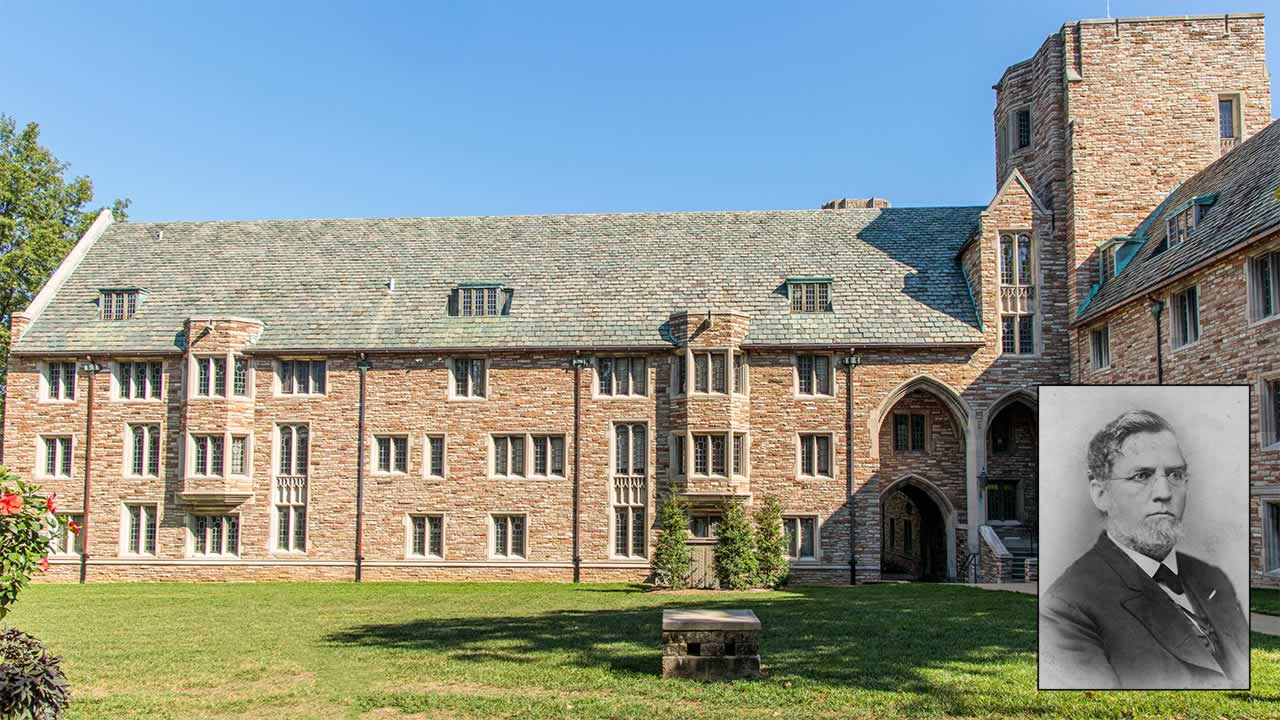
Brauer Hall
Ernst August Brauer (1819–96) was born in Hannover, Germany. He came to the United States in 1847 to be a missionary at the urging of Rev. Friedrich Wyneken, a missionary pastor who later became the second president of The Lutheran Church—Missouri Synod (LCMS). Brauer served as a pastor in Illinois and then in Pennsylvania. He came to Concordia Seminary in 1863 to serve as professor of exegesis, logic and isagogics. He also was a frequent contributor to LCMS publications. In 1872, Brauer left the Seminary and returned to parish ministry in St. Louis. Brauer Hall, named in his honor, is a dormitory with capacity for 56 students.
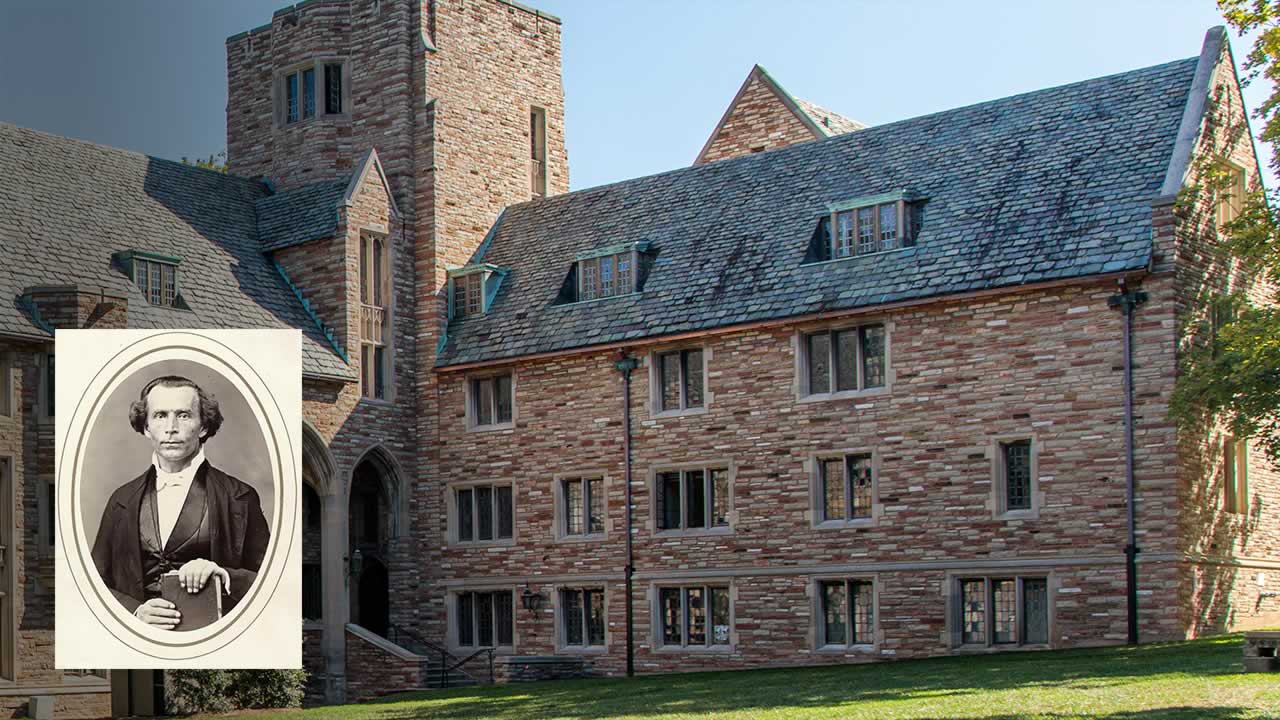
Craemer Hall
Friedrich August Craemer (1812–91) was born in Kleinlangheim, Germany. He studied theology in Erlangen, Germany, and was a tutor in Devonshire and Oxford, England. While in England, he was disturbed by the Oxford movement for English churches to renew their Roman Catholic ways. Eventually, he left England and went to America to join Rev. Friedrich Wyneken’s Lutheran mission work. Craemer was ordained in 1845 and served a congregation in Michigan, and in 1847 he helped found The Lutheran Church—Missouri Synod. In 1850, he began teaching at the practical seminary in Fort Wayne, Ind., and later served as its president. When that seminary joined with the theoretical seminary in St. Louis in 1861, he taught classes once again. The number of lectures he taught increased significantly when he moved to Springfield, Ill., to serve as the sole professor at the practical seminary and as a pastor in the Fort Wayne area. Craemer Hall is named in honor of this missionary, pastor and professor. The building is a dormitory with capacity for 35 students.

Founders Hall
Founders Hall is named after three of the four founders of Concordia Seminary — Rev. Johann Friedrich Buenger (1810-82), Rev. Theodor Julius Brohm (1808-81) and Rev. Ottomar Fuerbringer (1810-92). In 1838, many German Lutherans came to the United States during the Saxon immigration. A year later, a group of these immigrants built a small log cabin in Perry County, which is about 100 miles south of St. Louis, Mo. The school these men held inside was called the Log Cabin College, which later became Concordia Seminary. Founders Hall is a three-unit dormitory that has capacity for 94 students. Students affectionately refer to the dorm as the Isolation Dorm, or Iso, because it is not connected to the other buildings on campus.
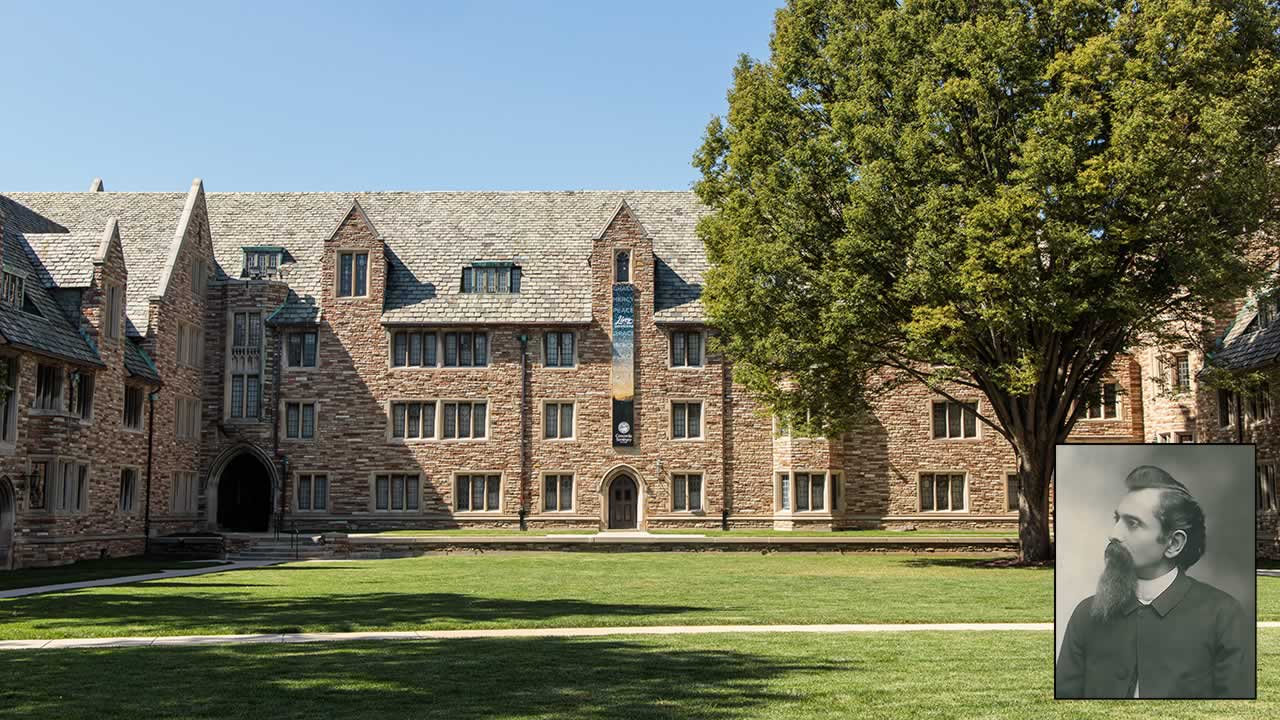
Graebner Hall
Augustus Lawrence Graebner (1849–1904) was born in Michigan, the son of a Lutheran missionary pastor. He was educated at both Concordia College, Fort Wayne, Ind., and Concordia Seminary, St. Louis. Graebner taught at the Theological Seminary of the Wisconsin Synod in Watertown, Wis., before he joined the faculty of Concordia Seminary in 1887, where he served until his death in 1904. He also was a prolific writer of theological works, authoring the books Dr. Martin Luther, Half a Century of Sound Lutheranism in America, Geschichte der Lutherischen Kirche in America and Outlines of Doctrinal Theology. Graebner Hall is named in his honor. The dormitory has capacity for 56 students.
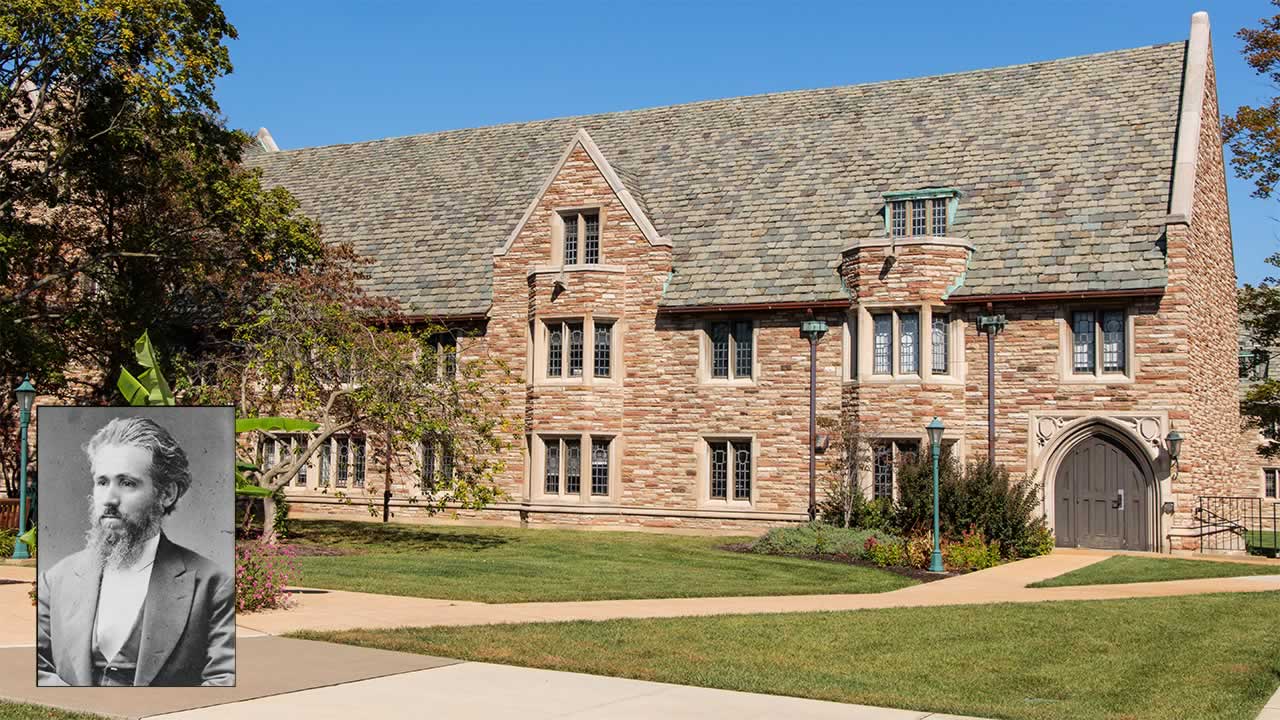
Guenther Hall
Martin Guenther (1831–93) was born in Dresden, Germany. His family immigrated to the United States in 1839. As a child, he was sent to the Log Cabin College in Altenburg, Mo., which eventually became Concordia Seminary and moved to its current location in St. Louis. After he graduated from the Seminary, Guenther served as a pastor in Wisconsin, Michigan and Illinois. In 1873, he returned to Concordia Seminary, but this time as a faculty member. At the time, he was one of only five faculty members. Guenther Hall, named in his honor, houses faculty offices.
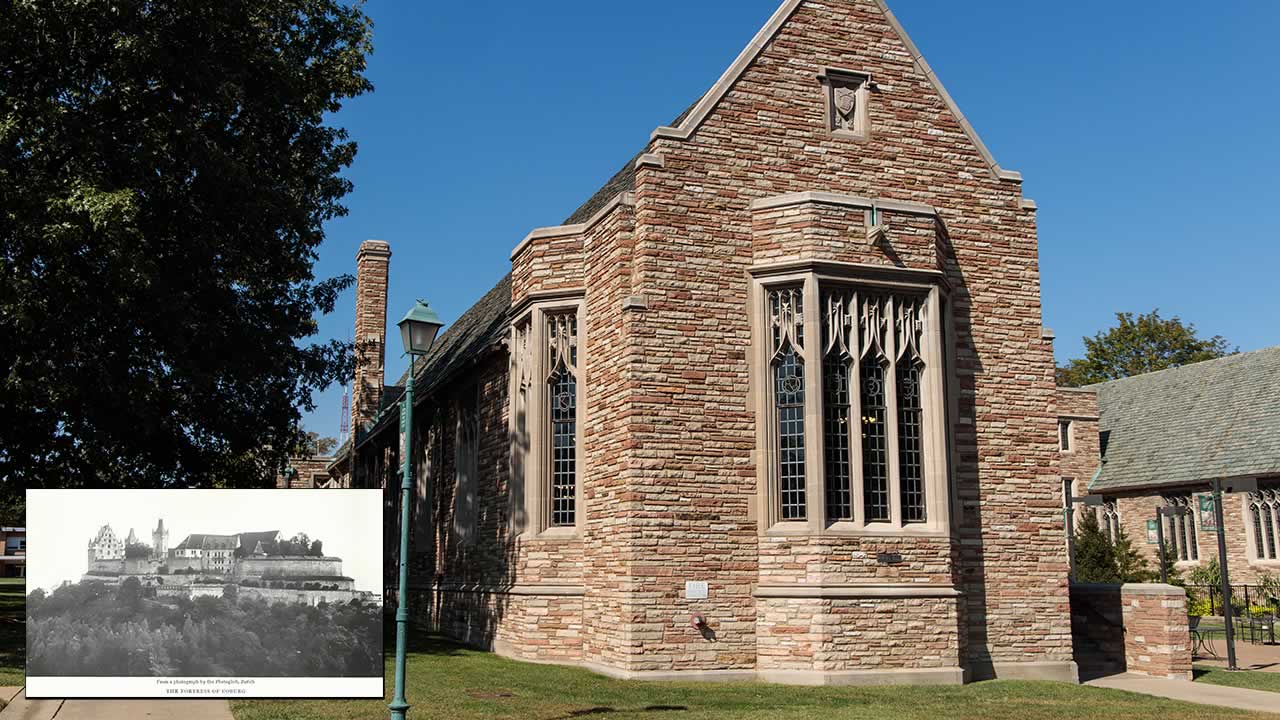
Koburg Hall
Koburg Hall is named after Coburg Castle, where Martin Luther stayed during the Diet of Augsburg. After the 1521 Diet of Worms, when Luther refused to recant his statement of faith, Emperor Charles V declared Luther a public outlaw. When Charles called another Diet in 1530, Luther couldn’t go. Instead, he stayed at Coburg Castle from April to October. While there, he, his friend and fellow theologian Philip Melanchthon, and other reformers developed what would become the Augsburg Confession. Today, Concordia Seminary’s Koburg Hall serves as a dining and event hall. Many wedding receptions are held here, as are Seminary events like the president’s monthly birthday lunches with faculty and staff. Highlights of the architecture include the banner of Constantine over the exit; a depiction in the east bay of the ship Olbers, on which many Saxon pioneers traveled to the United States; and a hammer, pen and scroll in the east gable representing the posting of the 95 Theses.
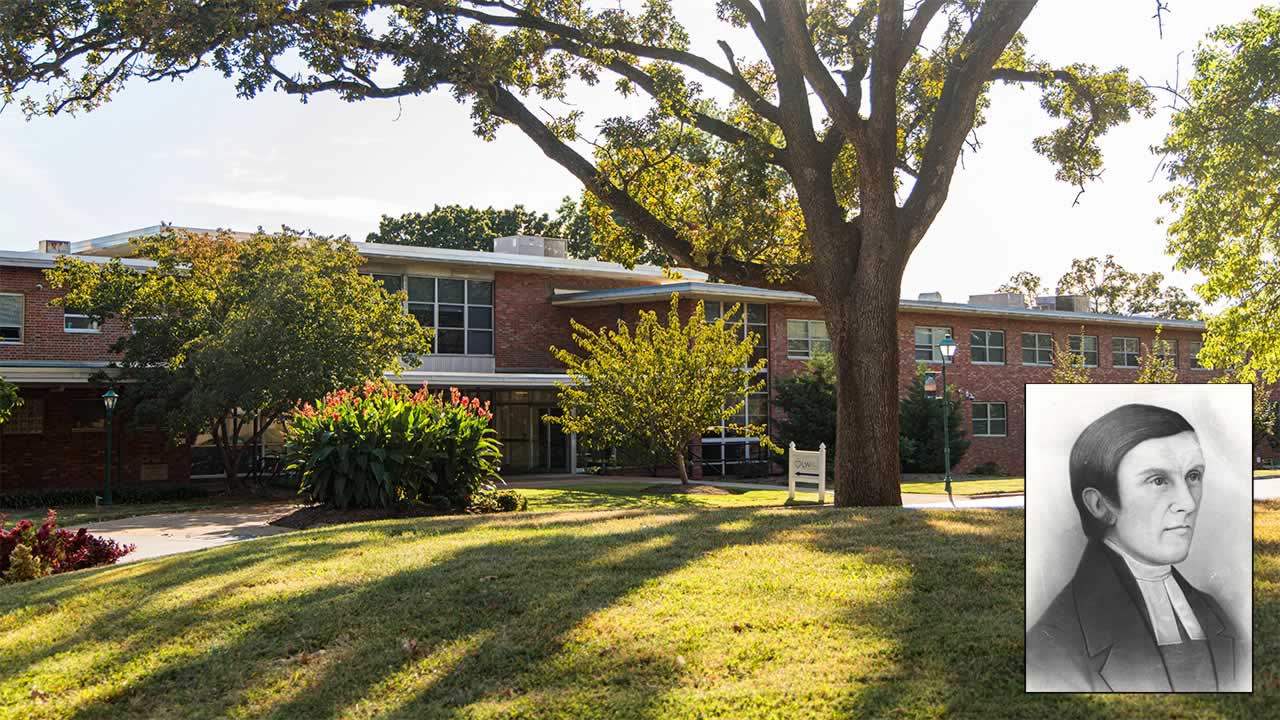
Loeber Hall
Gotthold Heinrich Loeber (1797–1849) was born in Kahla, Germany. He served as a Lutheran pastor in Germany until 1839, when he received a pastoral call to serve in Altenburg, Mo. Loeber founded the first Lutheran church in Altenburg in a log cabin. In 1845, the congregation built and moved into a new building, in which Concordia Seminary was founded as the Log Cabin College. In the two years that followed, Loeber also helped organize The Lutheran Church—Missouri Synod. Loeber Hall was built in 1954, when Seminary attendance reached an all-time high. The building was meant to house dorms and offices. In 1960, the second floor was added. Today, the building is home to the Seminary’s Advancement division’s offices. It also houses the national office of the Lutheran Women’s Missionary League on the lower level and guest housing on the second floor.
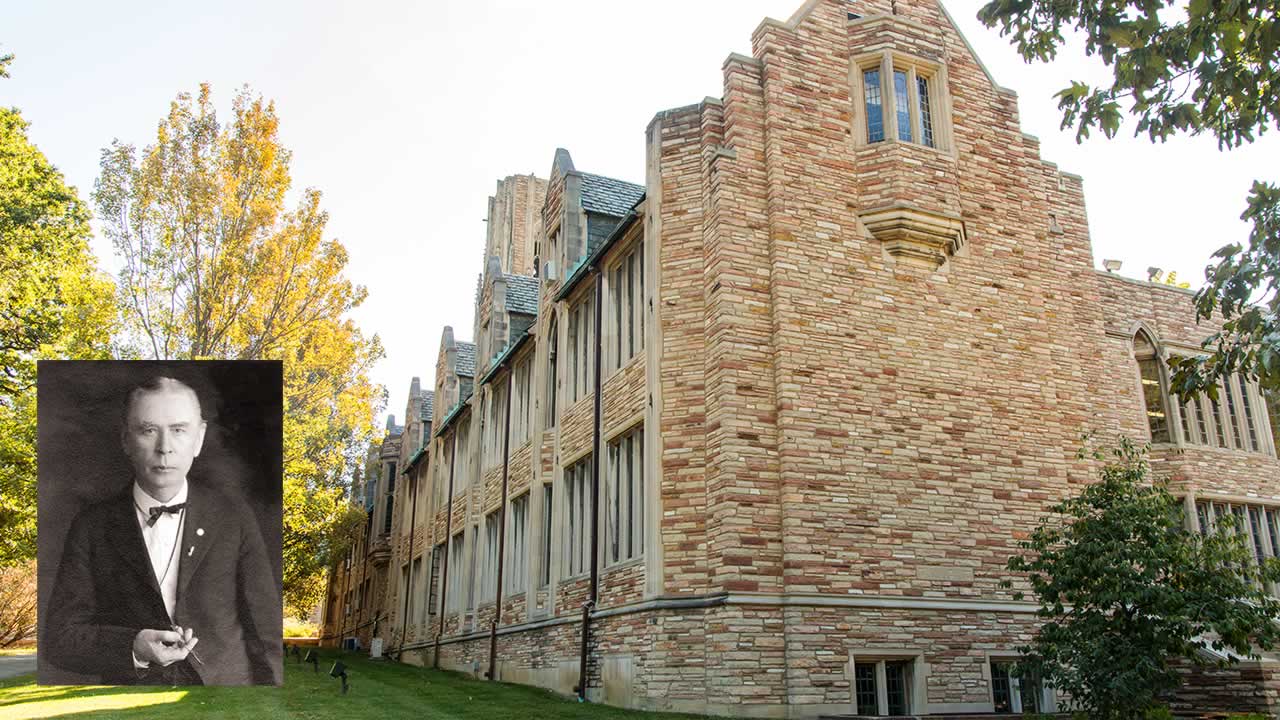
Pieper Hall
Franz August Otto Pieper (1852–1931) was born in Carwitz, Germany. He immigrated to the United States in 1870. He attended Northwestern University, Watertown, Wis., and later Concordia Seminary, St. Louis. After a few years serving as a Wisconsin Evangelical Lutheran Synod pastor, Pieper returned to Concordia Seminary as a professor. He excelled in dogmatics and became renowned as a teacher and preacher. He published several books, such as Christliche Dogmatik, as well as many articles and pamphlets. From 1878–1931, he served as the president of Concordia Seminary. He also served as the president of The Lutheran Church—Missouri Synod from 1899–1911. Pieper Hall, named in his honor, currently houses administrative offices, the Bosse Board Room, the Office of the President, the Office of the Provost and the Office of the Registrar.
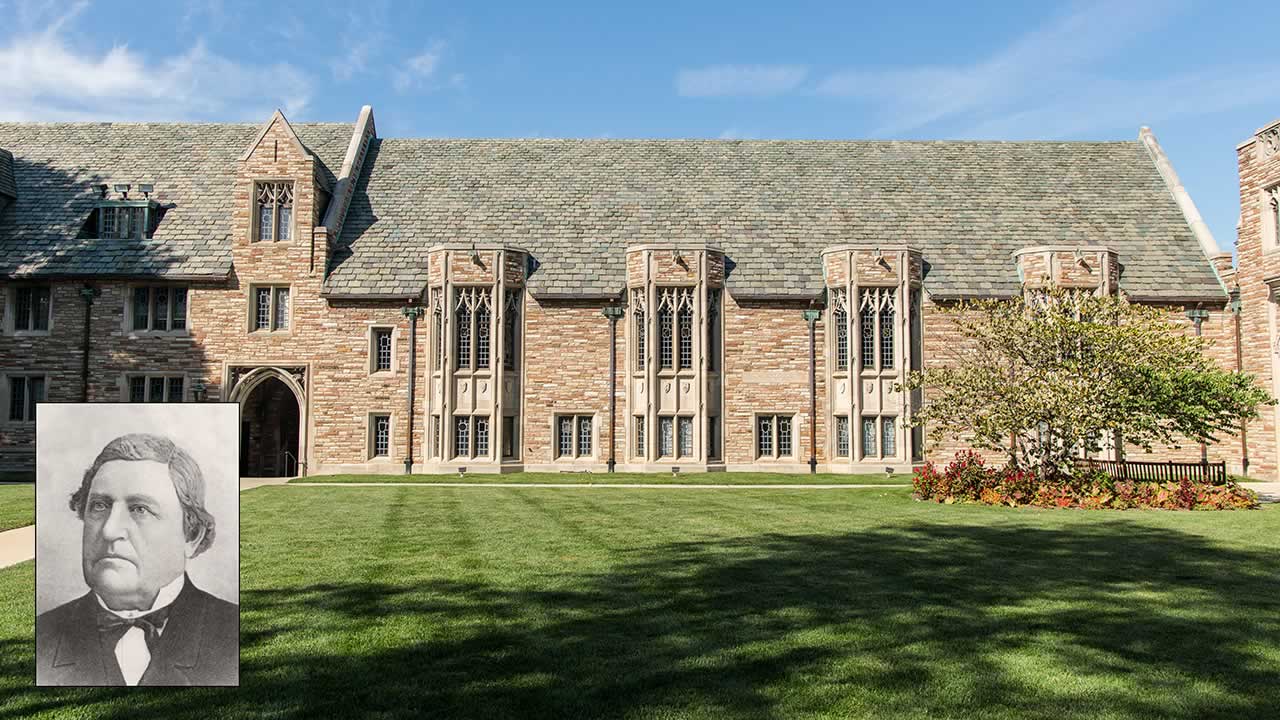
Pritzlaff Hall
John (1820–1900) and Sophie (1822–94) Pritzlaff were laypeople who owned a hardware store in Milwaukee, Wis. Their son Fred (1861–1951) was an active Lutheran layman. He served on the Board of Directors of The Lutheran Church—Missouri Synod and founded the Lutheran Layman’s League in his living room in 1917. He was awarded an honorary degree from Concordia Seminary, and he dedicated Pritzlaff Hall to his parents in 1925. When Concordia Seminary moved from its Jefferson Avenue location to its current location in Clayton, Mo., Pritzlaff Hall originally housed the Seminary’s library. It had space for 70,000 books. Today, Pritzlaff Hall houses several campus offices as well as the Presidents Room, which features paintings of each of the former presidents of Concordia Seminary. Panels on the south wall of the hall are inscribed with the names of 16 famous theologians. The front bay windows spell LEGE VERBUM DEI, which means “Read the Word of God.”
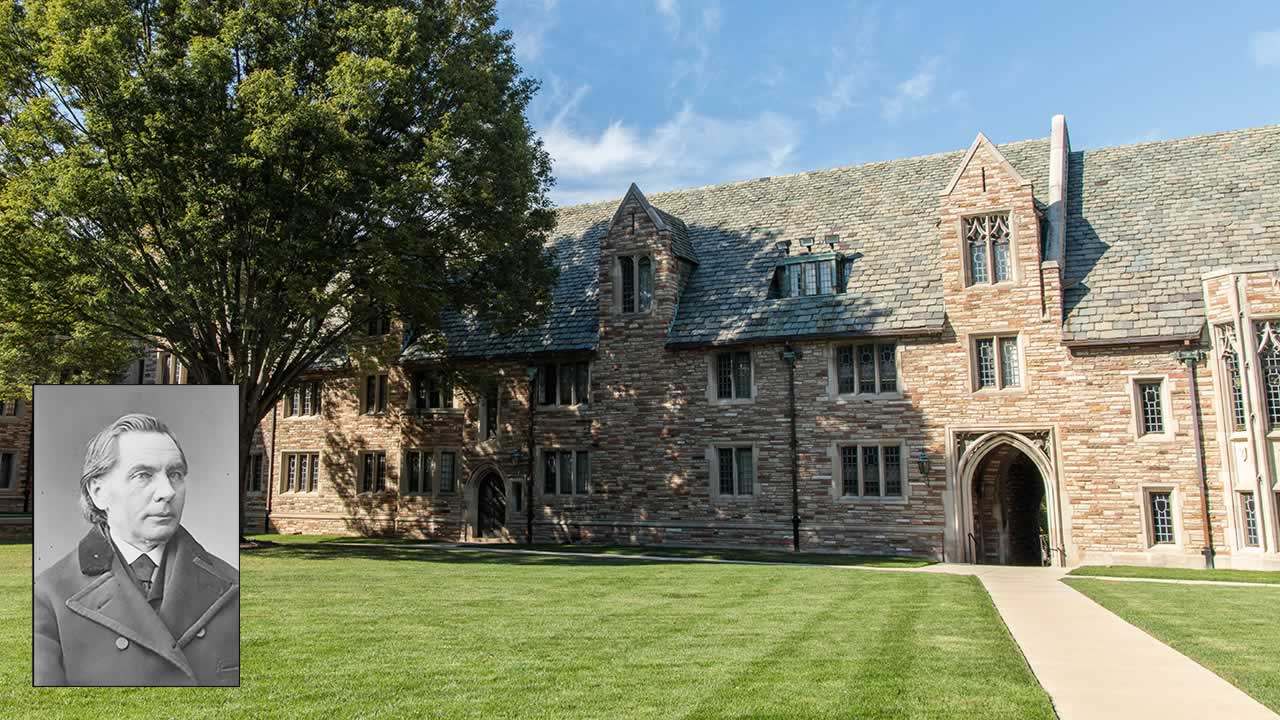
Schaller Hall
Johann Michael Gottlieb Schaller (1819–87) was born in Kirchenlamitz, Germany. He studied theology in Erlangen, Germany. In 1848, he immigrated to the United States at the urging of his former instructor Rev. Wilhelm Loehe, who hoped Schaller would serve on the mission field in Michigan. Instead, Schaller began serving as a pastor in Philadelphia, later joining The Lutheran Church—Missouri Synod (LCMS). At the 1850 LCMS convention, when hearing arguments on the Office of the Keys, Schaller became convinced that his beloved teacher, Loehe, was in error and that Rev. Friedrich Wyneken, who later became the second president of the LCMS, was right. Schaller moved to Michigan after all in 1850 when he began serving as a pastor in Detroit. In 1854, he moved to St. Louis and served as vicar at Trinity Lutheran Church. He joined the faculty at Concordia Seminary in 1872. Schaller Hall, named in his honor, is a dormitory with capacity for 47 students.
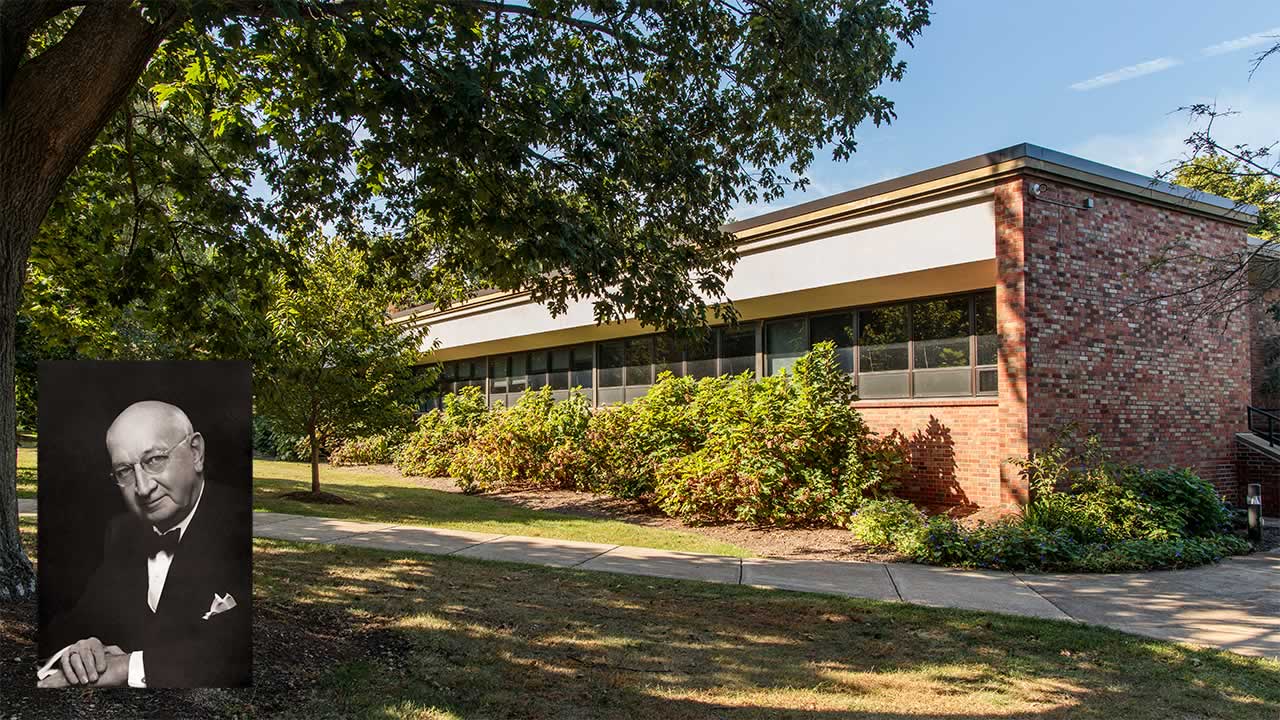
Sieck Hall
Louis John Sieck (1884–1952) was born in Erie, Pa. He attended Concordia Seminary as a student and was ordained in 1904. Sieck served as a pastor in St. Louis and was involved with The Lutheran Church—Missouri Synod (LCMS) publication The Lutheran Witness and LCMS radio station KFUO. In 1943, he became the president of Concordia Seminary and served until his death in 1952. The building that bears Sieck’s name was built in 1951, when Seminary attendance reached an all-time high. Originally serving as the graduate hall, today the building houses faculty offices, classrooms, a video studio and other campus offices.
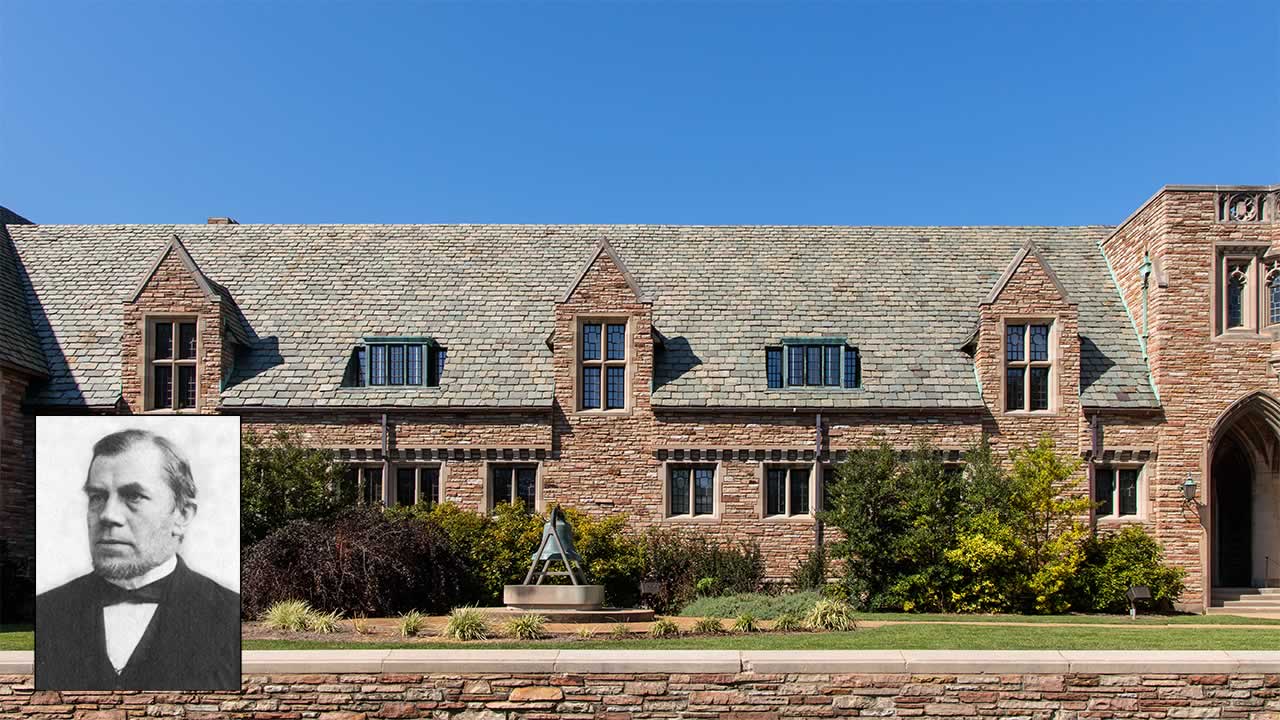
Stoeckhardt Hall
Karl Georg Stoeckhardt (1842–1913) was born in Saxony, Germany. He arrived in America in 1878 to serve as pastor at Holy Cross Lutheran Church in St. Louis and to teach at Concordia Seminary. Stoeckhardt was one of the Seminary’s first university-trained exegetes, teaching courses in both Old and New Testament. A professor for 35 years, he published numerous books, including biblical commentaries, sermons, and doctrinal and historical works. Stoeckhardt Hall originally served as a graduate hall for students in their fourth or elective year. The building had room to house 33 students. Today, Stoeckhardt Hall houses several campus offices.
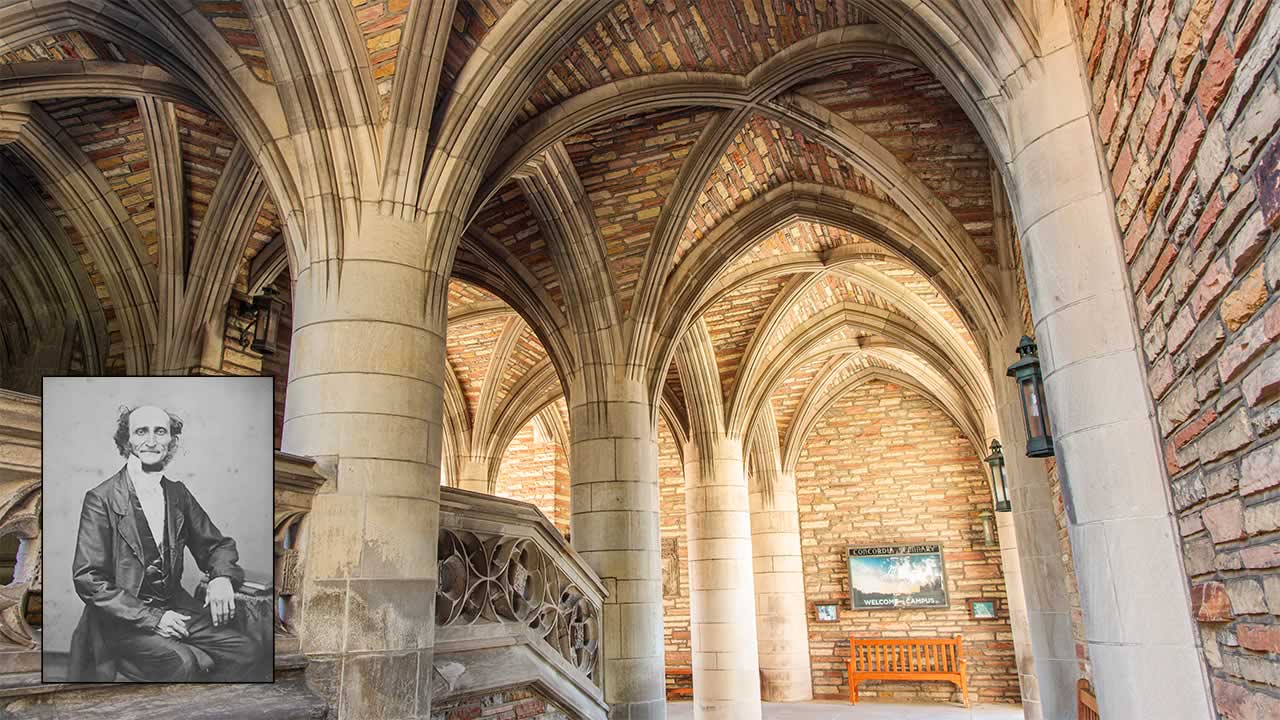
Walther Archway
Dr. C.F.W. Walther (1811–87) was born in Saxony, Germany, and was ordained in 1837. He sailed to the United States in 1838 as part of the Saxon immigration. Walther was one of the pastors who founded the Log Cabin College in Perry County, Mo., which was the original site of Concordia Seminary. Walther went on to teach at the Seminary, including after it moved to St. Louis in 1850. He served as the Seminary’s president from 1850 until his death. He was instrumental in forming The Lutheran Church—Missouri Synod and served as the church body’s president from 1847–50 and again from 1864–78. Concordia Seminary’s Walther Archway is named after this influential theologian. It sits under the 156-foot Luther Tower, the Seminary’s most iconic symbol, which contains a 49-bell carillon and the Chapel of the Holy Apostles.
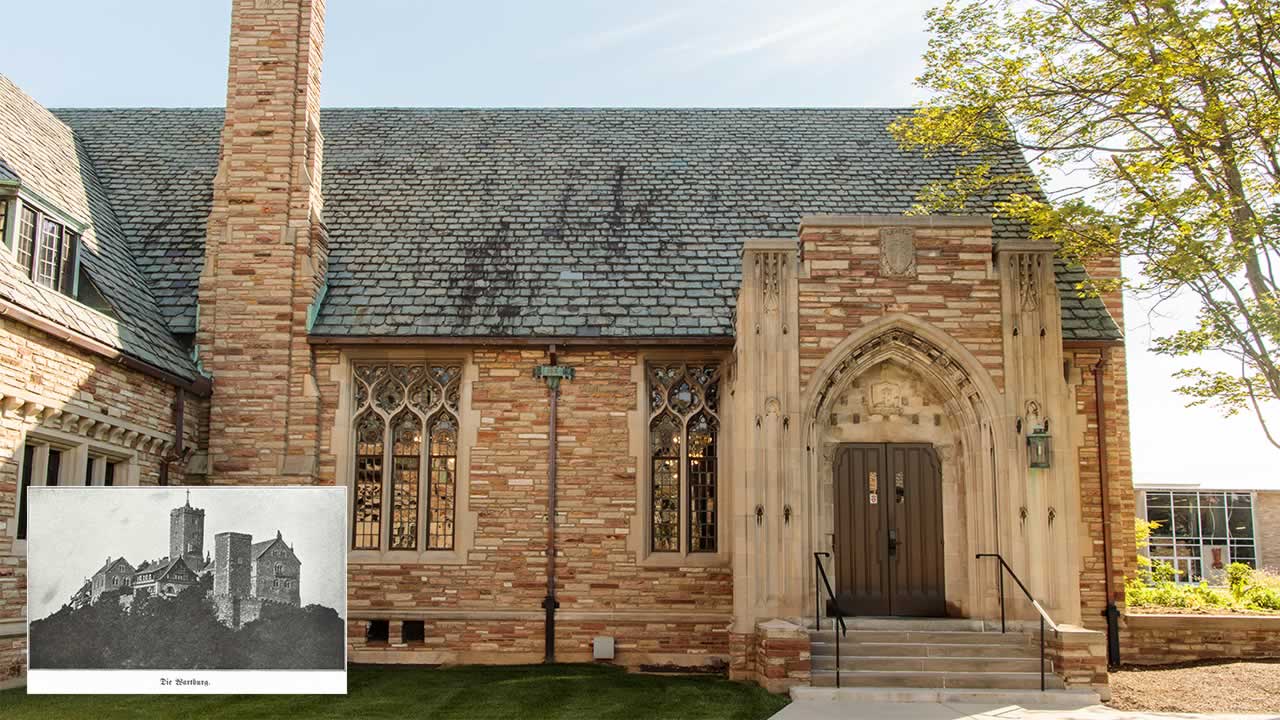
Wartburg Hall
Wartburg Hall is named after Wartburg Castle, where Martin Luther translated the New Testament into the common German tongue. After the 1521 Diet of Worms, when Luther refused to recant his statement of faith, Emperor Charles V declared Luther a public outlaw. That meant Luther’s life was in danger. His supporter Frederick the Wise had his men pretend to kidnap Luther on the road back to Wittenberg, Germany. In actuality, the men took Luther to Wartburg Castle, where Frederick the Wise kept Luther safe in absolute secrecy for 10 months. During that time, Luther busied himself with his translation work and responding via his writings to theological attacks from others. Today, Concordia Seminary’s Wartburg Hall serves as the main dining hall for the Seminary campus.
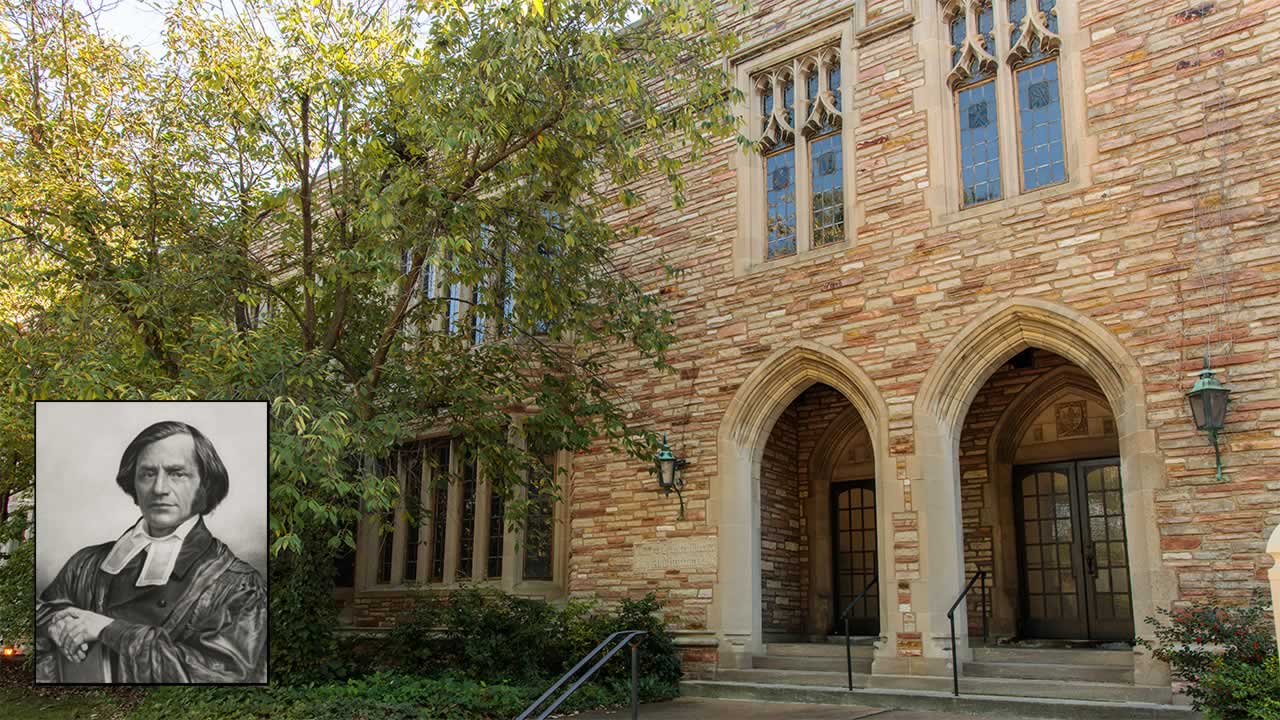
Wyneken Hall
Friedrich Conrad Dietrich Wyneken (1810–76) was born in Verden, Germany. He served as a pastor and then as a missionary, sent to America in 1838, where he served congregations in Indiana, Michigan and Ohio. Wyneken was one of the many people who was formative in the development of The Lutheran Church—Missouri Synod (LCMS). He served as the second president of the LCMS from 1850–64. Wyneken Hall was named in honor of this pastor, missionary and theologian. Originally, the Seminary’s chapel services were held in the building in the space known today as Werner Auditorium. Today, that auditorium is used for lectures and public programs. Wyneken Hall also houses classrooms, faculty offices and several campus offices.